SWEET DREAMS



























































































Foot traffic is never a problem for Pittsburgh pizzaiolo Rocco Pifferetti’s second concept, Rocco’s Slice House. It takes up just 500 square feet, but the location is hard to beat: inside a grocery store in Greensburg, Pennsylvania. “Over the years, I’ve been looking for ways to branch out,” Pifferetti says. “I thought about a food truck and things like that. One day I was eating lunch and saw something for lease in a Stop & Shop, and I was immediately intrigued.” The former pharmacy space provides enough room for a deck oven, two coolers and a prep area. Pifferetti sells slices and whole pies, and they’re significantly different from the fare served at his brick-and-mortar restaurant, Rocco’s Pizzeria, in nearby Youngwood. Determined to up his game for Rocco’s Slice House, Pifferetti crafted a higher hydration dough and now shreds his mozzarella in-house. He gets the occasional complaint from customers who expect a $1.50 slice like they’d find at Sam’s Club (his pepperoni slice goes for $3.50), but once they pay up, they’re hooked by the artisanal quality. Better yet, shoppers are already thinking about food when they spot him. “It’s a boardwalk, basically,” Pifferetti says.
ELEVATING THE BUSINESS OF PIZZA
Scan this code to subscribe or renew your subscription to PMQ! Or visit PMQ.com/subscribe

CONTENT
EDITOR IN CHIEF Rick Hynum rhynum@wtwhmedia.com
SENIOR EDITOR Charlie Pogacar cpogacar@wtwhmedia.com
ASSOCIATE EDITOR Tracy Morin tmorin@wtwhmedia.com
ASSOCIATE EDITOR/USPT COORDINATOR Brian Hernandez bhernandez@wtwhmedia.com
VP, ASSOCIATION AND COMMUNITY ENGAGEMENT Allison Dean adean@wtwhmedia.com
VP, EDITORIAL DIRECTOR Danny Klein dklein@wtwhmedia.com
ART & PRODUCTION
ART DIRECTOR Eric Summers esummers@wtwhmedia.com
SENIOR ART DIRECTOR Tory Bartelt tbartelt@wtwhmedia.com
DIGITAL PRODUCTION COORDINATOR Blake Harris bharris@wtwhmedia.com
A Publication of WTWH Media, LLC 662-234-5481
Volume 28, Issue 9
November 2024 ISSN 1937-5263
CONTENT STUDIO
VICE PRESIDENT Peggy Carouthers pcarouthers@wtwhmedia.com
WRITER Ya’el McCloud ymccloud@wtwhmedia.com
WRITER
Olivia Schuster oschuster@wtwhmedia.com
SALES & BUSINESS DEVELOPMENT
VP, SALES
Lindsay Buck lbuck@wtwhmedia.com
NATIONAL SALES MANAGER
Tom Boyles tboyles@wtwhmedia.com
VP, BUSINESS DEVELOPMENT
Eugene Drezner edrezner@wtwhmedia.com
CUSTOMER SERVICE REPRESENTATIVE
Brandy Pinion bpinion@wtwhmedia.com
FOUNDER
Steve Green
PMQ PIZZA Issue 9 November 2024 (ISSN 1937-5263) is published monthly in January, March, April, May, June, August, September, October, November and December by WTWH Media, LLC, 1111 Superior Ave #2600, Cleveland, OH 44114-2560.
Periodical postage pricing paid at Cleveland, OH. Additional mailing offices at Bolingbrook, IL.
POSTMASTER: Send address changes to PMQ PIZZA, 1111 Superior Ave #2600, Cleveland, OH 44114-2560.
Cost of U.S. subscription is $25 per year. International $35.
Opinions expressed by the editors and contributing writers are strictly their own and not necessarily those of the advertisers. All rights reserved. No portion of PMQ PIZZA may be reproduced in whole or part without written consent.
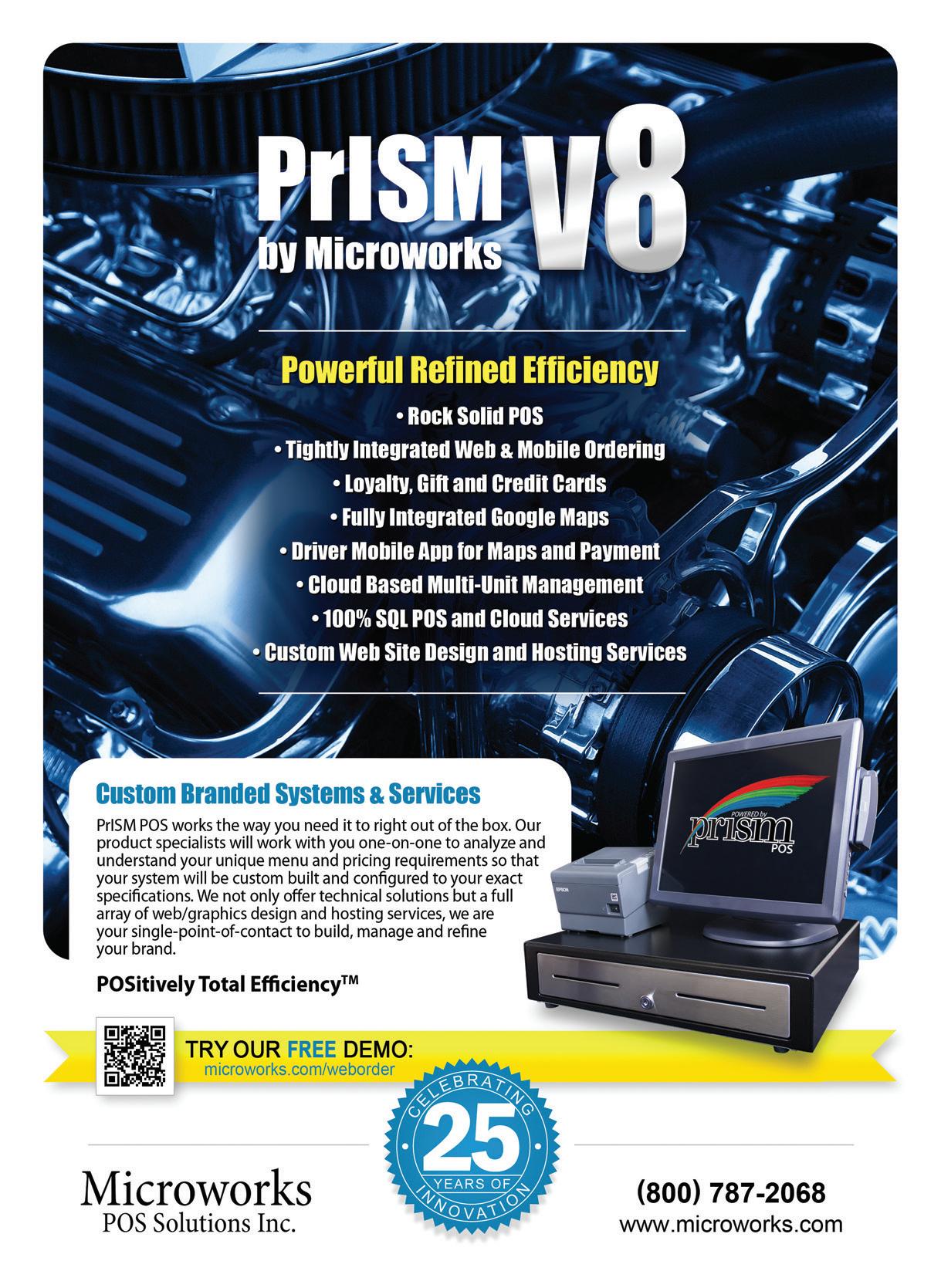
Long before most pizzerias began optimizing pies for on-the-go eating, Jersey Shore operators were mastering a style that came to be called boardwalk pizza.
Upselling boosts your bottom line, but training your team to do it is a challenge. Five experts offer their best tips and tricks, including digital strategies proven to work.
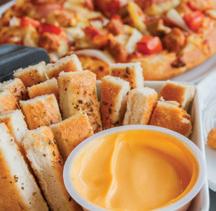
Sustainability brings its share of challenges, but 79% of customers prefer to dine at green restaurants, and 78% of employees prefer to work at them. Here’s how to get started.
The hotly anticipated “robot revolution” has been moving at a slower pace than expected, especially in the pizza restaurant industry. What’s holding it back?
PMQ caught the Shakespeare-loving owners of Much Ado About Pizza between acts to learn how they turned a midsummer night’s dream of pizzeria ownership into reality.
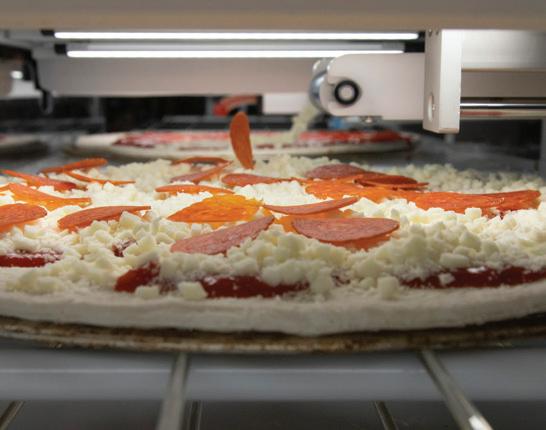
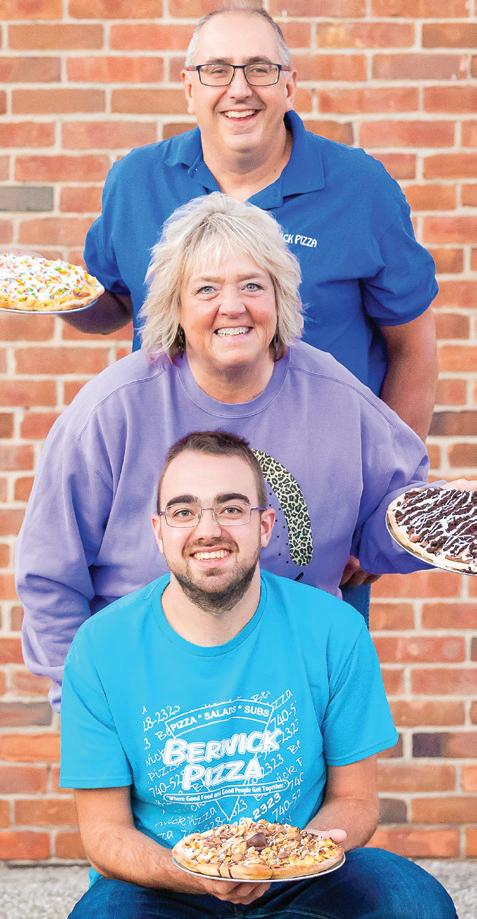
Step through the door at the family-owned Berwick Pizza in tiny Green Camp, Ohio, and you’ll enter a realm of culinary whimsy and ingenuity, where every customer’s dream pizza comes to life.
By RICK HYNUM
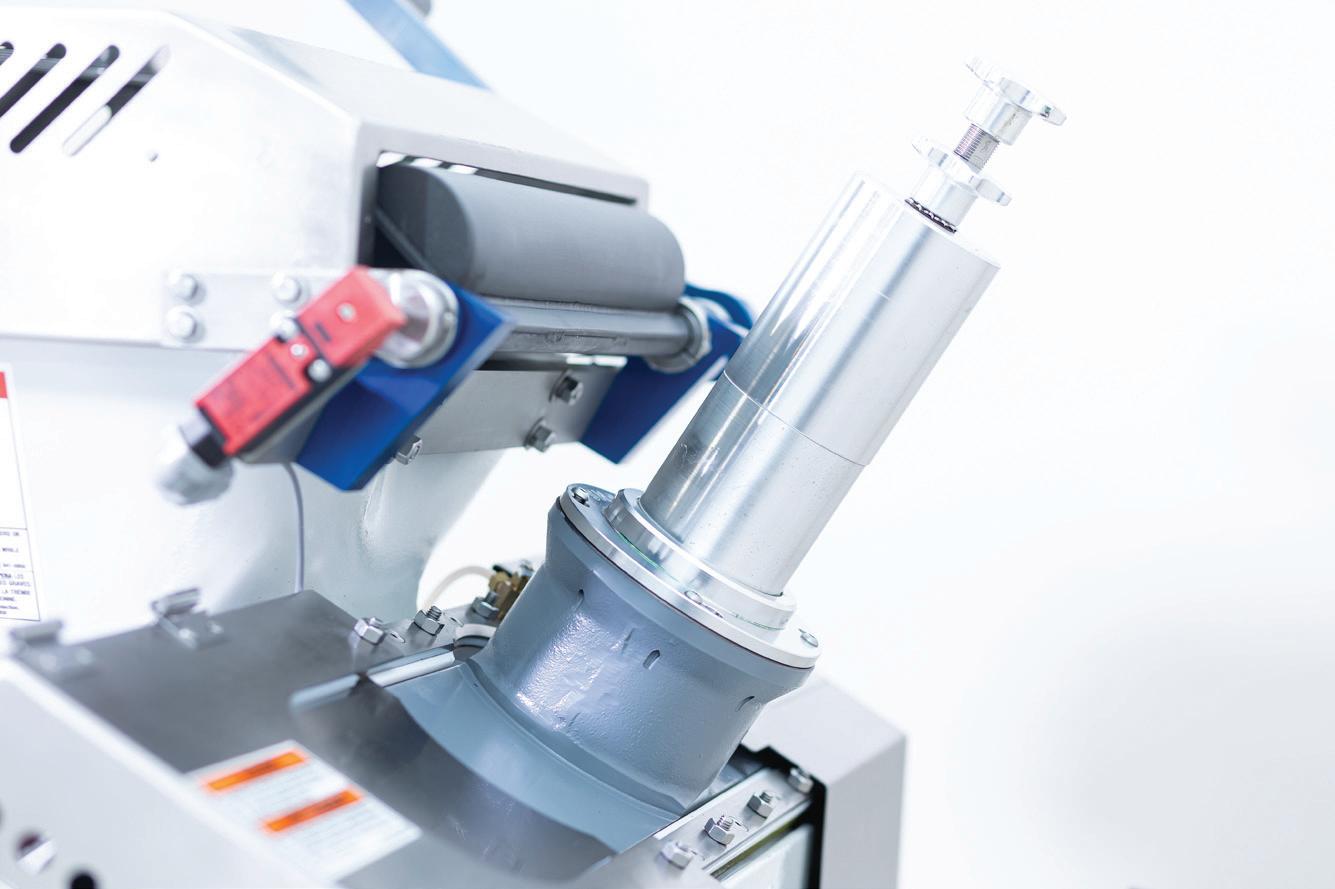

November 6-7, 2024 Orange County Convention Center Orlando, FL
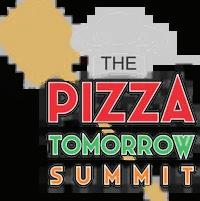
d o u g h d i v i d i n g , r o u n d i n g , a n d p r e s s i n g e f f o r t l e s s ! D o u g h P r e s s e s
D o u g h D i v i d e r s

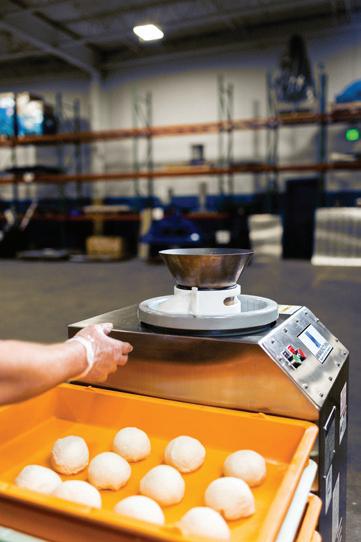







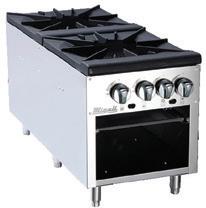








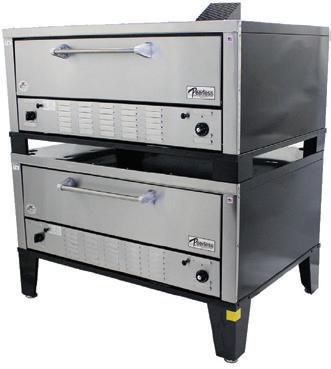



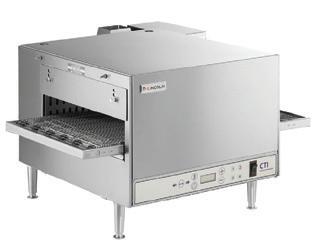

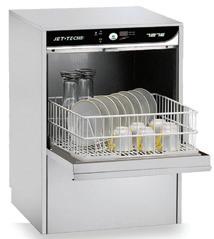



STEVE BANGOS, OWNER OF EUREKA PIZZA CO. in Yorba Linda, California, isn’t just a talented pizzaiolo. The man can draw, paint and market his pizzeria with the best of them. Case in point: In September, Bangos wrapped up an art project that’s tailor-made for the social media crowd. He personally designed and painted a huge “pizza wings” mural on the side of his restaurant’s building, creating an ideal spot for photo ops and drawing new attention to his restaurant. “It’s an ongoing effort to constantly invent and reinvent marketing ideas to bring
in new customers,” Bangos said. “Every day, we’re faced with more and more challenges in a period of uncertainty.” So Bangos put on his “creative hat” and started painting, all the while documenting his progress with photos on Instagram and Facebook to build excitement. “My passions are culinary art, fine art and commercial art, all of which came together to create a promotional campaign to strike up interest, intrigue, engagement and interactive participation,” Bangos said. “Seeing more traffic through our doors is always a plus!”
Tony Gemignani, the world-renowned mastermind behind San Francisco concepts like Tony’s Pizza Napoletana and Capo’s by Tony Gemignani, loves a good hefeweizen—a type of German white beer. So he found an eager collaborator in Black Hammer Brewing Company, also based in San Francisco, to craft an epic new pizza-beer duo. Offered as an LTO this fall at the above-mentioned locations, Tony’s Pizzaweizen was both a limited-time artisanal pie and a German brewski with citrus and tropical notes. Gemignani used the beer in a honey-malted dough for the pizza, while the beer was produced with wheat berries from Gemignani’s own Tony’s Type 00 Pizza Flour. The pizza was served with two cans or pints of the hefeweizen beer for $61, with a limit of 12 offered per day at both locations. The pie, meanwhile, came topped with carnitas cooked in oranges, G&S Farms corn, mozzarella, white cheddar, brick cheese, Maldon salt, orange juice mist, sweety drop peppers, citrus lime Tajín aioli, an orange wedge for squeezing, and thinly sliced serrano peppers on the side ($45). “It’s been really fun to collaborate and get creative with another San Francisco-based company like Black Hammer Brewing Company to produce a pizza-and-beer mash-up for the ages,” Gemignani said. Jim Furman, Black Hammer’s founder, said he felt “honored to be pouring our beer at Tony’s famed restaurants.”
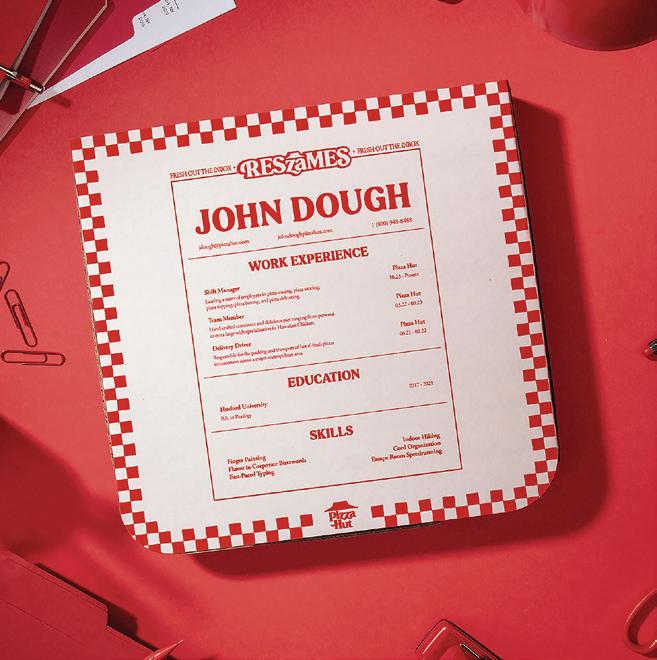

Looking for a unique promotion that could help your customers during tough economic times? Maybe there’s a lesson to be learned from Pizza Hut. For about a week in September, the brand delivered pizza boxes featuring select customers’ resumes to corporate offices around New York City. To help customers land their dream jobs, the resumes were printed directly on the boxes, which contained a medium cheese pie, and hand-delivered to the corporate headquarters of the applicants’ choosing—all for free. To enter the contest, customers visited a designated website and input the ZIP code of their desired employer’s headquarters. If the address fell into Pizza Hut’s eligible delivery zones, customers built out their resumes using an online form. Pizza Hut then chose an undisclosed number of winners. For an independent pizzeria, a similar contest could be executed for a lower cost, simply by printing the resumes as box toppers. As Melissa Friebe, Pizza Hut’s chief marketing officer, said, “Who could possibly ignore a resume when it’s delivered as a delicious pizza?”
Polly-o mozzarella is the best part of the pizza



Developed specifically for New York style pizza, our new loaf is the perfect combination of quality and convenience. With a superior melt, stretch and browning, this formula is full of flavor with less residual oil.
CHEESE, Made in New York since 1899
email info@polly-o.com to request samples

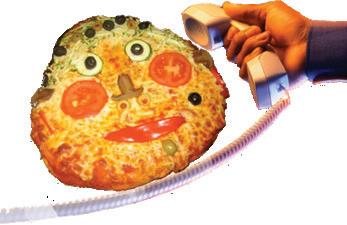

Increase revenue and lower cost
• No Busy Signals
• Call Recording
• Call Queuing / Auto Answering
• Multiple (random) start of call upsell messages
• On hold music/message loops
• Detailed reports—hold times, lost calls etc
• Callerid delivered to POS system
• Auto attendants ”If you have arrived for curbside pickup press one ”


Protect against outages
• When your Internet fails our cellular backup router keeps your phones, credit card processing and web orders all working.
• The backup kicks in automatically in seconds. So quickly you will not even drop calls in progress when your primary Internet goes down!
• The same router can be used to create chain wide virtual private network to connect your locations.
• SD WAN LTE/LTE A (4G/5G) modems.


“Press one to receive a text message with links to our onlne ordering ”.
Manage bulk text message marketing from our system to drive increased revenue. As low as $0.01 per message. Group text messaging to communicate with your employees (drivers, bartenders, all
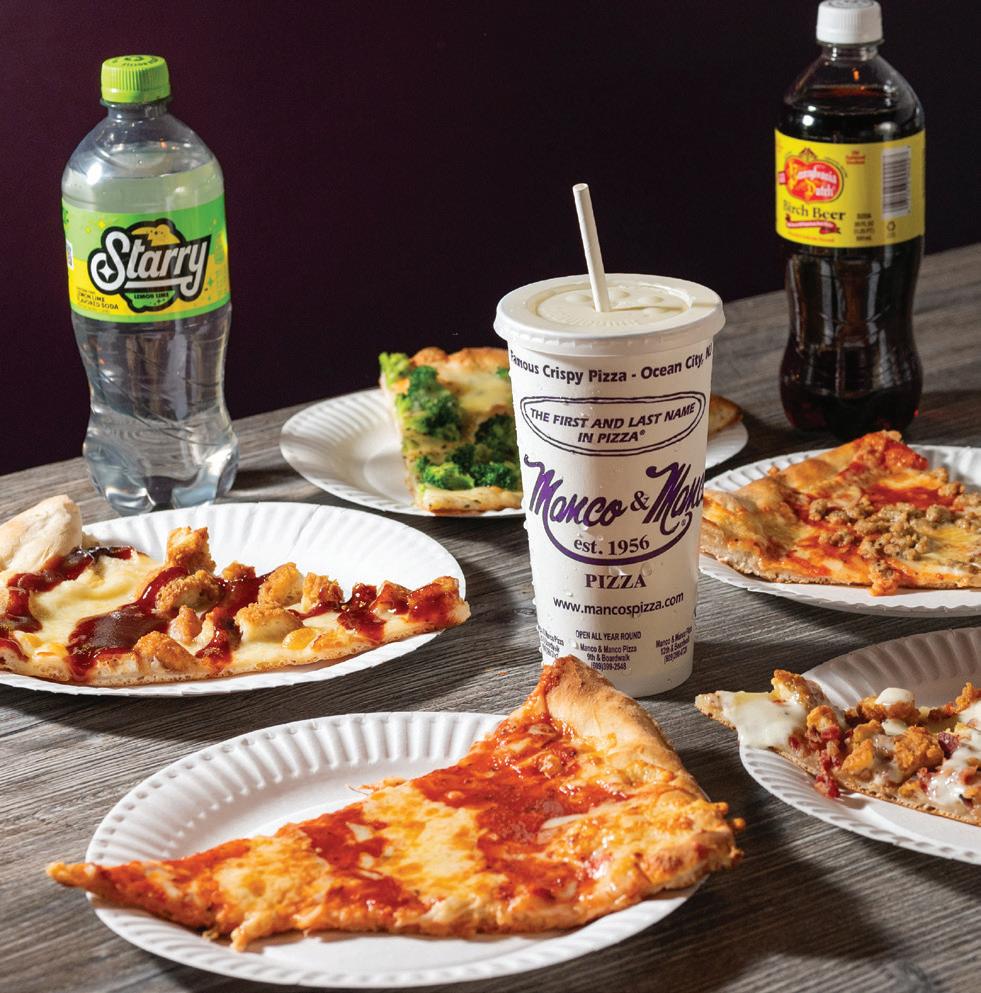
New Jersey’s boardwalk pizza is all about the oceanside experience, but the style has expanded inland and all the way down to Florida’s Gulf Coast.
BY CHARLIE POGACAR
FOR SEVERAL GENERATIONS, visitors to the New Jersey Shore— swimsuit-clad and nursing sunburns—have walked up and down the boardwalk searching for a good slice of pizza. And long before other pizzerias began optimizing pies for on-the-go eating, boardwalk establishments were mastering the craft of what became known as the boardwalk pizza style.
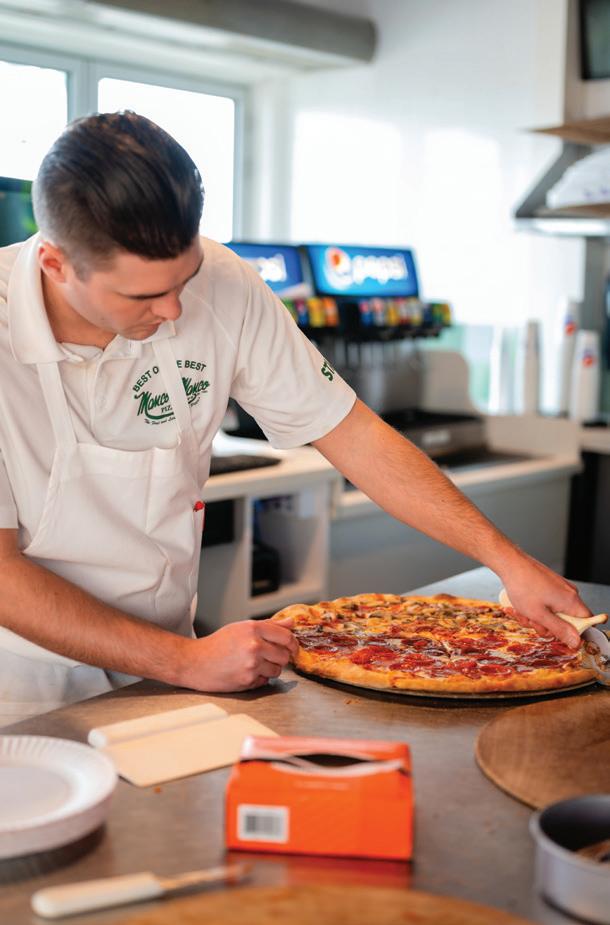
New Jersey boardwalk pizza means thin-crust pies served with a sweet sauce and liberal amounts of mozzarella—and sometimes cheddar—cheese. They’re similar to the pies you’ll find elsewhere in New Jersey but are best enjoyed, fans believe, with a side of ocean views. And while there’s no consensus on who invented the style, several pizzerias that serve it have been in business for generations. That includes Mack’s Pizza, which has two locations on the Wildwood Boardwalk—just 10 blocks apart. In other words, demand for their pies is that strong.
The same family has owned Mack’s since 1953. Pete Riess, a manager at one of the Wildwood locations, says Mack’s has a secret family recipe that only a handful of people know. That’s not the only thing that makes Mack’s pizza unique, either, he says. “Every pizzeria [on the boardwalk] has its own unique flavor,” Riess says. “Everybody’s crust is different. Their sauce is different. I just think the water in South Jersey makes for a better crust.”
But boardwalk pizza is about a lot more than the crust, sauce and cheese. For Riess and so many others with
“Every pizzeria [on the boardwalk] has its own unique flavor. Everybody’s crust is different. Their sauce is different. I just think the water in South Jersey makes for a better crust.”
Pete Riess, Mack’s Pizza
a deep nostalgia for vacationing “down the shore,” the pizza makes the trip that much better—and vice versa.
Manco & Manco Pizza, which has been family-owned and located on the Ocean City Boardwalk since 1956, has three locations on the Jersey Shore. General manager Tom Rossi says this unique style of pizza is all about tradition and a top-notch in-person experience.
“[Manco & Manco] came down from Trenton in 1956 to Ocean City Boardwalk, and we’ve been here ever since,” Rossi says. “So when you think Ocean City, you think of the beach, you think of the boardwalk, you think pizza— and our recipe has not changed since 1956.”
To enhance the customer’s dining experience, Rossi notes, his pizza makers put on a theatrical dough throwing spectacle for guests. “Our guys are basically the professional athletes of the pizza industry. They’re throwing the dough in the air, giving everyone a show— it’s a great experience in general. It’s not just pizza. It’s pizza and a show.”
The team at Manco & Manco Pizza has other tricks up its sleeve to distinguish its boardwalk pies from the competition. Instead of first saucing the dough and then adding cheese, the brand reversed the process: They add cheese and then grab a plastic tube that spews out tomato sauce from a refrigerated vat. Each pie has a swirl of tomato sauce on top rather than an even distribution across the base layer.
Customers love Manco & Manco’s offerings so much that the business has been able to expand inland. In 2022, the brand opened a location in Citizens Bank Park, home to the Philadelphia Phillies. In 2024, it added a location at BayCare Ballpark in Clearwater, Florida, where the Phillies plays their spring training games. With so many people from the Philadelphia metro area making annual visits to the Jersey Shore, Manco & Manco has built-in brand recognition at both venues.

“Ocean City is more of a resort town, and a lot of our customers are from the city,” Rossi says. “The majority of our families come from the Philly area or the surrounding areas. So we decided to bring our pizza to them instead of them coming down to us all the time for pizza.”
It’s worth noting that some say the pizza doesn’t taste quite the same when you eat it in a baseball stadium in a landlocked city. It’s not that the ingredients are modified or that Manco & Manco does something different for pizzas made during Phillies’ games. It’s just that, for so many, being at the ocean is all part of the experience. Boardwalk pizzerias are so intertwined with the beach
“When you think Ocean City, you think of the beach, you think of the boardwalk, you think pizza—and our recipe has not changed since 1956.”
Tom Rossi, Manco & Manco Pizza
experience, in fact, many of them are seasonal. Both Mack’s locations are open from the spring until fall, while Manco & Manco shutters two of its boardwalk locations in the winter while a third remains open.
Perhaps because it’s so closely associated with vacation, family and the beach, boardwalk pizza represents community to those who love it. Riess and Rossi would know something about that: Rossi has been with Manco & Manco for about 30 years, while Riess has worked for Mack’s on and off for 40-plus years. “We pride ourselves on not only customer loyalty but service to our employees,” Rossi says of Manco & Manco Pizza. “We have a long tenured employee list. There’s a lot of people that have been there over 20 years—everybody comes back because it’s such a family-oriented organization.”
“It’s just a tradition: eating on the boardwalk,” Riess adds. “It’s the ambience that makes it special—being out at the shore and enjoying your pizza. It’s part of your shore vacation. We’ve always said: Bad boardwalk pizza is better than good pizza at home.”
Charlie Pogacar is PMQ’s senior editor.
Few restaurateurs, if any, do pizza like the Buckland family at Berwick Pizza in tiny Green Camp, Ohio.
Story by Rick Hynum

THERE’S A CERTAIN WILLY WONKA-ESQUE QUALITY to Berwick Pizza—minus, of course, the Oompa-Loompas and the booby traps for “bad kids.” Located in tiny Green Camp, Ohio, and owned by Todd and Brenda Buckland and their son, Austin, it looks like an ordinary pizzeria from the outside. But step through the door, and you’ll enter a magical realm of whimsy and ingenuity, where every customer’s dream pizza comes to life. And unlike Willy himself, there’s no sense of potential menace lurking behind the Bucklands’ cheerful smiles—just a passion for wildly inventive pizzas that make customers’ taste buds do a double take.
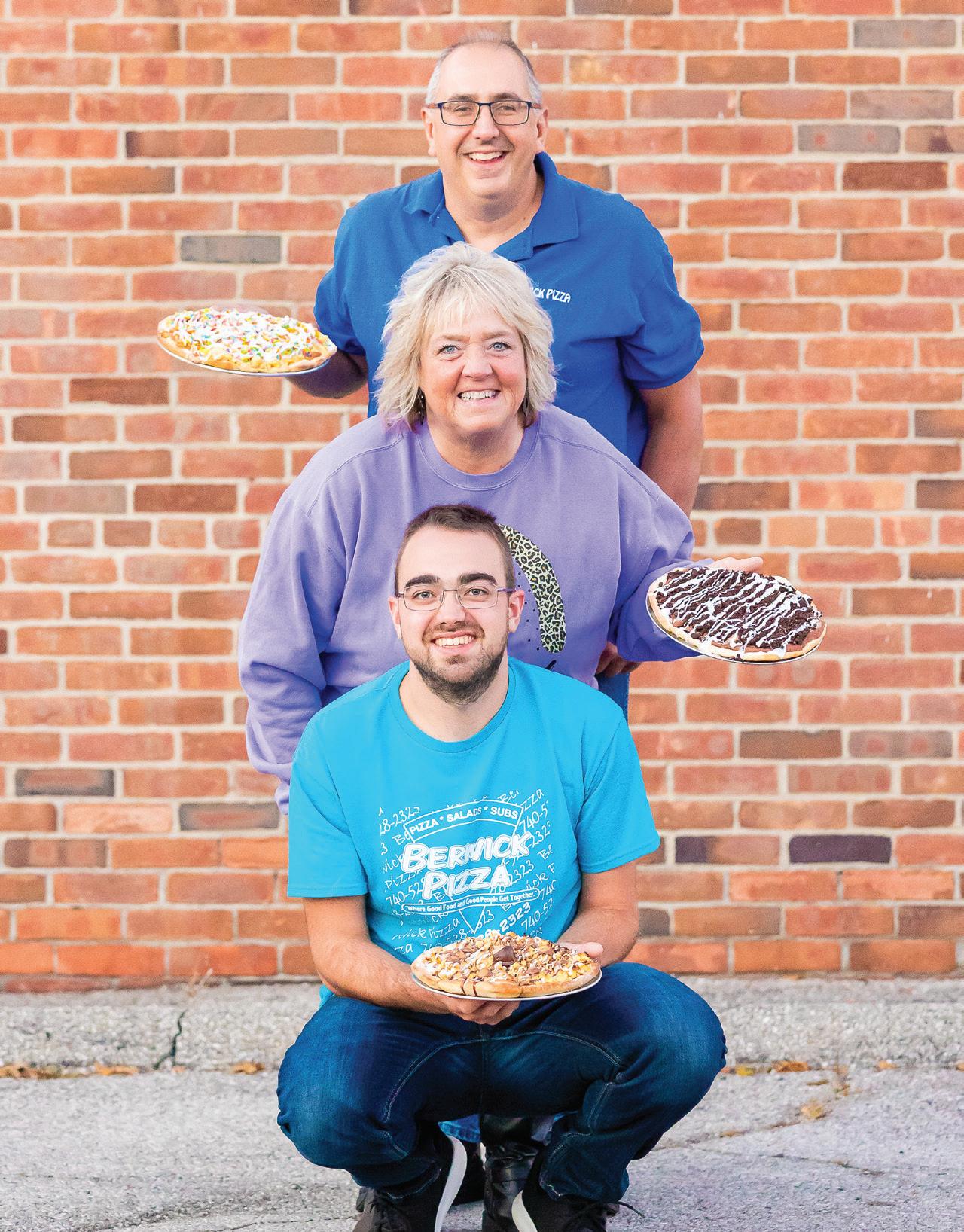



The building itself has been a pizza shop since the mid1960s. “It went through a few owners,” Austin says. “My parents purchased it in 2007—no restaurant experience, nothing. My dad had worked at Honda for many years, so he just jumped into it. I was eight years old when they bought it. So I’ve grown up here, and it’s always been a family affair.”
And a family-friendly one, too. Spending time with the Bucklands is like chilling with your favorite cousins, if your favorite cousins are culinary wizards who specialize in dessert pizzas topped with Fruity Pebbles, strawberry Pop-Tarts and Little Debbie Christmas Tree Cakes, not to mention savory pies loaded with Nashville hot chicken, mac and cheese and crab Rangoon. “We didn’t just set out thinking, ‘Hey, we’re going to start making weird pizzas,’” Austin recalls. “We kind of just walked into it, and everything fell into place.”
Today, Berwick Pizza draws customers from across Ohio and, thanks to an influencer’s video that went viral on TikTok, from 28 other states as well. All of that in a town with a population of about 300, located a full hour from the nearest major city, Columbus.
But few restaurateurs, if any, do pizza quite like the Bucklands.
When Todd and Brenda bought Berwick Pizza, they were restaurant novices. But Todd knew how to run a business, thanks to his experience as senior manager of manufacturing at the Honda Auto Plant in Marysville. “We have very good pizza, very creative things, but you have to have a good business sense,” Todd says. “To be successful, that’s even more important than the food side of it.”
Offering a unique selling proposition makes good business sense, too, although it wasn’t easy at first.
Berwick Pizza already offered three fairly standard dessert pizzas but started the more innovative Pizza of the Month program in 2016, at the suggestion of Matt Meyer, Todd and Brenda’s son-in-law. “He would try unusual recipes with different sauces and combinations that pushed the envelope,” Austin says. “We eventually realized that our customers might love them just as much as we did.”
Those pizzas weren’t exactly a hit from the get-go. “Launching the program was something that we went back and forth on a little bit at the beginning, for the simple reasons of the time and money that went into creating them,” Austin says. “Some of our hurdles were


carrying special ingredients that we don’t typically stock and finding the right amount to source when we didn’t yet know how well a recipe would perform.”
The early monthly specials weren’t all that wacky— think Philly cheesesteak, Sloppy Joe, and mac and cheese pies. Initially, customers showed little interest, but the Bucklands didn’t give up. “We thought we needed to expand on the dessert pizzas,” Austin says. “After Matt left in 2017, I took over the Pizza of the Month. I’m a sweets guy, and I just started getting a little weirder and weirder with them as we went on.”
A dessert pizza topped with Fruity Pebbles proved to be a game changer. “That was the first one that really caught people’s attention,” Austin reflects. “That was way out of the box, way different than a lot of people had ever seen before. It was so popular that we brought it back as a pizza of the month from time to time until we finally put it on our regular menu.”
That same year, Berwick Pizza introduced the popular Pumpkin Pie Pizza, made with pumpkin pie filling, strudel and whipped cream, and the Gingerbread Dessert Pizza. Now the Bucklands were off and running, with a license to be as weird as they wanna be.
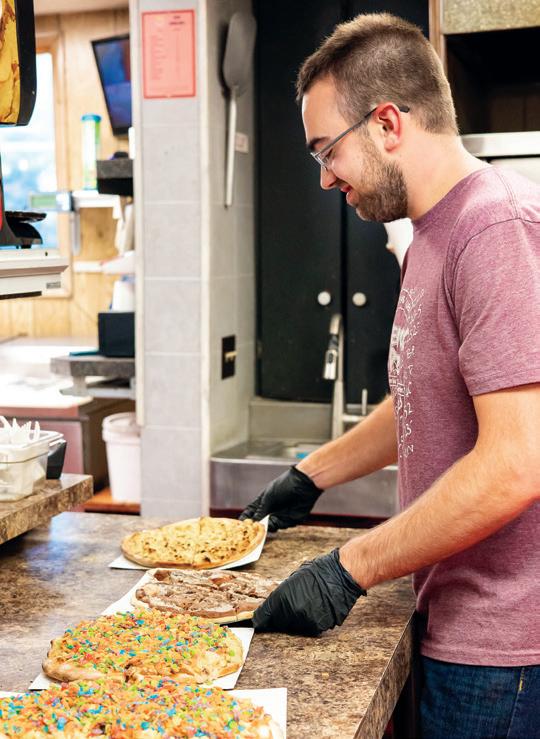
“We didn’t just set out thinking, ‘Hey, we’re going to start making weird pizzas.’
We
kind of just walked into it, and everything fell into place.”
Austin Buckland, Berwick Pizza
Nerds, Bubble Gum and Fortune Cookies
So which dessert pizzas have popped, and which ones have fizzled? “There have absolutely been clear winners and losers,” Austin says. Fan favorites include the Cosmic Brownie, Death by Chocolate and Pumpkin Donut. “Fruity Pebbles was also a bestseller, although it managed to spark a small controversy over whether it belonged on pizza or not,” Austin says. “Nobody marched at us with pitchforks or anything, but it managed to get a few Facebook warriors quite upset. Sometimes that kind of discussion helps to promote us, though, so it’s all good.”
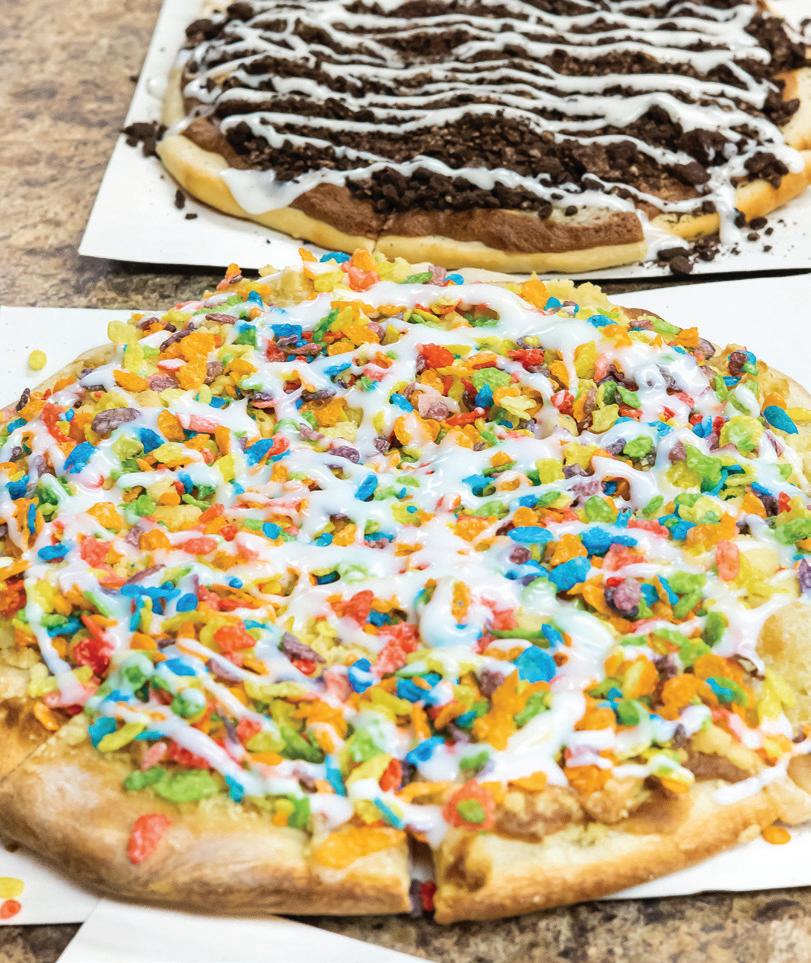
“[The Fruity Pebbles Pizza] was the first one that really caught people’s attention. That was way out of the box, way different than a lot of people had ever seen before.”
Austin Buckland, Berwick Pizza
After all, if it tastes good on a pizza, it belongs on a pizza. Still, Austin admits, “Some flavors are love-it-or-hate-it. Nerds, Key Lime Pie and Pop Rocks on pizza apparently fall into that category. When you take risks, sometimes it works, and sometimes it doesn’t.”
Then there’s the Christmas Tree Cake, featuring a sweet cream filling, smashed Little Debbie cakes, streusel, icing and sprinkles. “We did it for the first time last December, and it set the record pretty high for our bestselling pizza of the month,” Austin notes. It was so popular, the Bucklands brought it back for a monthlong Christmas in July promotion this year.
The Nerds pizza, on the other hand, only seemed like a good idea at the time. “That was a crazy one,” Austin says. “It tasted really good. If you like Nerds, it was the perfect pizza for you. But compared to our usual numbers, it was a flop. If you don’t like Nerds, you’re not gonna like it on a pizza.”
Other dessert recipes never made it past the trial stage, such as an Asian-inspired fortune cookie pizza, which followed a sweet-and-sour chicken (non-dessert) pizza that customers loved. “I thought that would be great,” Austin recalled. “And I did try it, but when you think about it, there’s not much flavor to a fortune cookie.”

Cotton candy and bubble gum flavors haven’t worked out either, he added. For the latter, “I’ve tried bubble gum flavoring in the dough, different fillings, different streusels, toppings, all of that. Maybe one day we’ll get it. That one just keeps coming back to haunt me right now. The problem is, the bubble gum flavor tends to bake out entirely, which is interesting.”
Austin and his family are rarely short on ideas for new specialty pizzas, but why do all the thinking themselves? They ramped up the menu madness in May by letting their employees conjure up their own dream pies. That promotion led to dessert pizzas like Kylie’s Apple Cinnamon Roll, Hannah’s Twix, Patience’s Hot





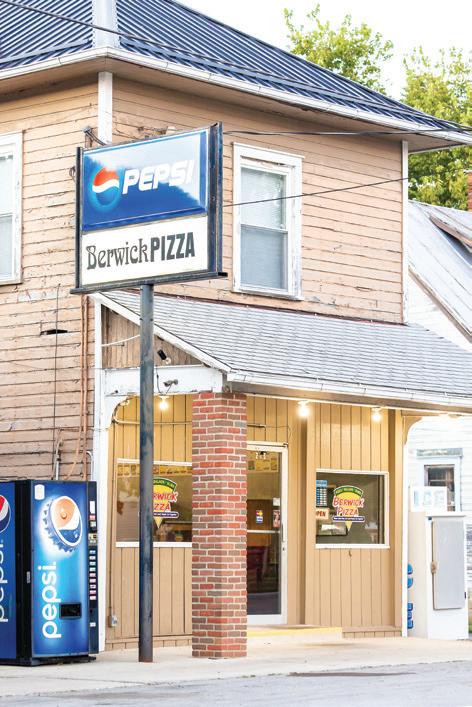
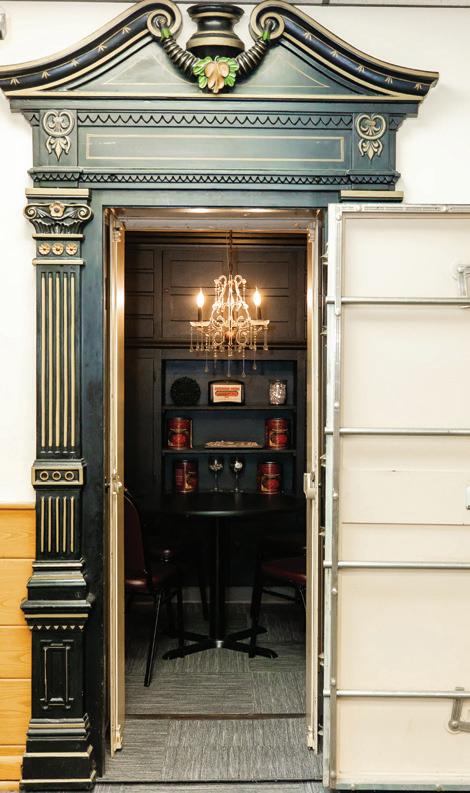
After taking over Berwick Pizza, the Bucklands expanded into a space previously occupied by a bank and turned the vault into a unique dining area.
Chocolate-Covered Banana, Kenzley’s Strawberry Pop Tart, and Jayda’s Coffee Lava Cake. Each pizza was featured for a week on Facebook and Instagram, with prizes—such as gift cards and a paid shift off—based on total sales.
Even better, the employees became marketers for the restaurant, drumming up local support to help them win the contest. One determined employee made posters for her pie, and her mother placed them around her workplace, a local factory. “She taped them up in the break rooms, the bathrooms, on the walls and in hallways everywhere,” Austin says. “So they got a group order together [that] totaled 20 chocolate-covered pizzas. She had friends and family come in, and we had people say, ‘Hey, I didn’t even know you guys were out here. I saw this flier taped in the break room, so I just had to come and try it.’ That kind of took the competition to another level.”
In 2023, the Bucklands created the themed Berwick Box, featuring three specialty pizzas in a single box. The Monster Mash Box, for example, scared up business with new pies like the Cherry Zombie, the Peanut Butter & Jelly Ghost and the Chocolate Bat. A few months later, the Snack Cake Box featured Nutty Bar, Oatmeal Crème and Swiss Creme pizzas, while Flavors of the Street Fair boxes came with the Gyro, Street Taco and Deep-Fried Cheesecake pizzas. This past January, they debuted a Pizza of the Month Loyalty Card— customers who buy all 12 monthly pizzas in 2024 will win a $25 gift card, but to get the loyalty card for free, they had to buy that month’s Cocoa Pebbles dessert pizza.
Perhaps their biggest coup for 2024, however, was reeling in influencer Dereck Malone, known as Sniping for Dom on TikTok and Instagram. Chalk that one up to Austin, who tracked down and pitched the Ohio-based restaurant reviewer on Berwick Pizza. “I had found his contact info and sent him an email, not really knowing if I would hear back or not, but it turned out really nice,” Austin says. “There was quite a lot of back-and-forth over the course of a few weeks to make sure it was something that lined up with his channel and something he would be interested in. And he was really interested because of all the eye-catching stuff that we do.”
Malone, who has more than 877,600 followers on TikTok alone, visited Berwick Pizza with his son, Dom. “We’re going crazy over everything, so we just got lots of things,” Dom enthused to the camera. The feast included the Buffalo Chicken Dip, the Crab Rangoon, the Mac & Cheese Pulled Pork, the Spaghetti Pizza and the Fruity Pebbles. “These things are crazy-good!” Malone exclaimed. “The crust is great on them, too.”

“These [pizzas] are crazy-good! The crust is great on them, too.”
Dereck Malone, Sniping for Dom
The review boosted business for Berwick Pizza “almost instantly,” Austin notes. “It posted on a Wednesday, between 8 and 9 a.m.,” he recalls. “By noon, I think it was at, like, 60,000 views. [Malone] called me and was, like, ‘Hey, just from my experience of watching how these things usually go, I think it’s going to hit a million…I’m just telling you to get ready, be prepared.’”
Malone, as it turned out, underestimated the performance of the June 5 video; it has since topped 3.5 million plays on TikTok. It was so successful, the Bucklands later collaborated with the influencer on several specialty pizzas—including a Jolly Rancher pizza, a Skittles pizza and a taco pizza featuring Doritos—as well as a meet-and-greet with Malone and his family at the restaurant in August.
“Social media has been the key to all of this [success],” Austin says. “Without that, nobody knows we’re here. If they do know we’re here, they forget that we’re here. Social media is just a constant reminder to customers when we’re getting new pizzas out there. The [Sniping for Dom collaboration] really proved that. That’s why we reached out to him. But it blew our expectations out of the water—how much impact one little thing like that could have.”
Ultimately, though, Berwick Pizza has catapulted to success on the strength of a menu that tests the boundaries of what pizza can be. “These were the craziest pizzas we’ve ever seen in our life!” Malone declared in a follow-up TikTok video. Willy Wonka would doubtlessly agree—and approve.
Rick Hynum is PMQ’s editor in chief.

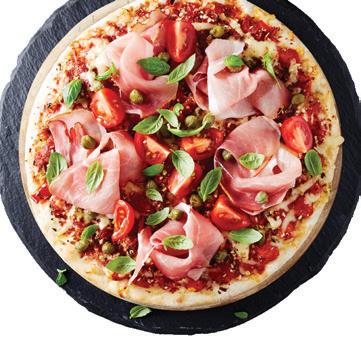
Craving the freshest insights into the pizza restaurant industry? Subscribe to PMQ’s e-newsletter, Pizza Pulse, and we’ll fill your inbox with:
• Hot-from-the-oven pizza industry news delivered twice a week (Mondays and Wednesdays)
• Moneymaking promotions from leading independents and chains
• Proven marketing strategies to boost your pizzeria’s sales
• Pizzeria success stories and expert insights
Pizza Pulse is your lifeline to success in the pizzeria industry.
Sign up for free at pmq.com/subscribe!

Industry experts share their top tips for upselling customers, creating a better experience for them and bigger profits for the pizzeria.
BY TRACY MORIN
WHEN A CUSTOMER ORDERS FROM YOUR PIZZERIA either in-store or online—are they offered add-ons, larger sizes, drink and dessert recommendations, or other profit-boosting boons for your business? If not, you’re missing out on easy ways to increase ticket averages. PMQ tapped five marketing experts from the pizza industry to share their best tips and tricks for engaging in the art of upselling. Start using these strategies today to enhance your profits, employee satisfaction and overall customer experience.


Betsy Rammos-Tsichlis, owner and operator, Pantry Pizza, Dorchester, MA
Upselling gets your customers to try out new menu items that sometimes they don’t even know existed or weren’t expecting. Obviously, upselling is also a great way to increase average ticket sales. This is a great incentive for servers or tip-waged employees to increase their tips.
We have an online ordering platform that asks the customer at the end of the order: “Would you like to add an appetizer and or a dessert?” or “Don’t forget to add your drink!” That way, they can add it if they haven’t already done so. When on the phone taking a pickup or delivery order, we ask the customer, “Would you like a drink or a dessert with that?” Sometimes, people honestly forget to order something like that, and it does jog their memory and encourages them to purchase. You’re bringing in more money—and not spending ad money to do so—by upselling to someone who’s already ordering.
Upselling is as easy as asking, “What kind of soda with your slice?” or “Which dessert would you like tonight?” or “The large sub is only a dollar more.” Incorporate it into your online ordering platform as well as your telephone script for your order takers. The more the customer orders from you, the closer a relationship you establish.

Rosario Farruggio, manager,
A Modo Mio, Arlington, VA
Upselling is not just for profit but to enhance the experience—to show and teach customers about our culture and make dining more exciting and flavorful. Appetizers get you talking about the meal; wine and beer complement your mains or pizzas; desserts end the meal with something sweet that can be shared. And don’t forget the after-dinner drink to help digest it all—if it’s lunch, espresso is a must.
Some upselling tactics include:
• Appealing descriptions and beautiful pictures of the items
• Knowledgeable servers who properly offer appetizers, pair drinks, and set the stage for desserts
• Fair pricing
For online ordering, in addition to the images and descriptions, make it easy to choose and order upsells. In-store, servers should have firsthand experience with the items they are upselling. If they know how good something tastes, they’ll be able to teach customers. So teach employees the experience as well. Have them understand the cultural part. Reward them when they have those higher sales.
Upselling can make a 10% to 30% sales difference, in my experience. But you’ll also retain more customers, because they have fully enjoyed your restaurant.



Matt Plapp, CEO (Chief Energy Officer), America’s Best Restaurants and DRYVER, Florence, KY
Upselling is one of the most significant ways a restaurant can impact its bottom line, but it’s also the hardest thing to train your team to do, so it’s massively important to leverage your digital marketing to help. There are two key tactics you should be using monthly with your digital marketing:
1. Give customers a digital promotion that forces them to try an appetizer or dessert. But, more importantly, give them an offer they’d feel stupid saying no to: something that’s 100% free! A few years ago, one of my favorite pizza joints offered me a free order of three cookies for my next visit. I had never ordered a dessert at this spot on prior visits. On my next visit, I redeemed the promotion, and they were terrific. Yes, the restaurant gave me a promo that cost them about $1 or $2, but I’ve since ordered those $9 cookies at least 50 times, and they’ve gotten more than $500 in cookie sales.
2. Run a double points promo. At a one-location pizza restaurant in Arizona, they send out a promotion through their loyalty program every month to encourage customers they know are visiting to spend more on that week’s visit. In one example, 70 customers took up the restaurant on the promotion. These customers were emailed an offer to spend $8 more than they had in the past 90 days. Those 70 customers had a spending bump of $991.14, or $14.15 per order. There was no discount offered—just double points in exchange for them spending $8 more, and they ended up exceeding that. After their food cost, that’s $693 in incremental profit. Plus, this goes along with point No. 1. These customers had to buy something they usually do not buy, like an appetizer or dessert, and approximately one-third of these customers continue to purchase that item on future visits, increasing average customer spend by $4.13.
“The restaurant gave me a [free cookie] promo that cost them about $1 or $2, but I’ve since ordered those $9 cookies at least 50 times, and they’ve gotten more than $500 in cookie sales.”
Matt Plapp, America’s Best Restaurants
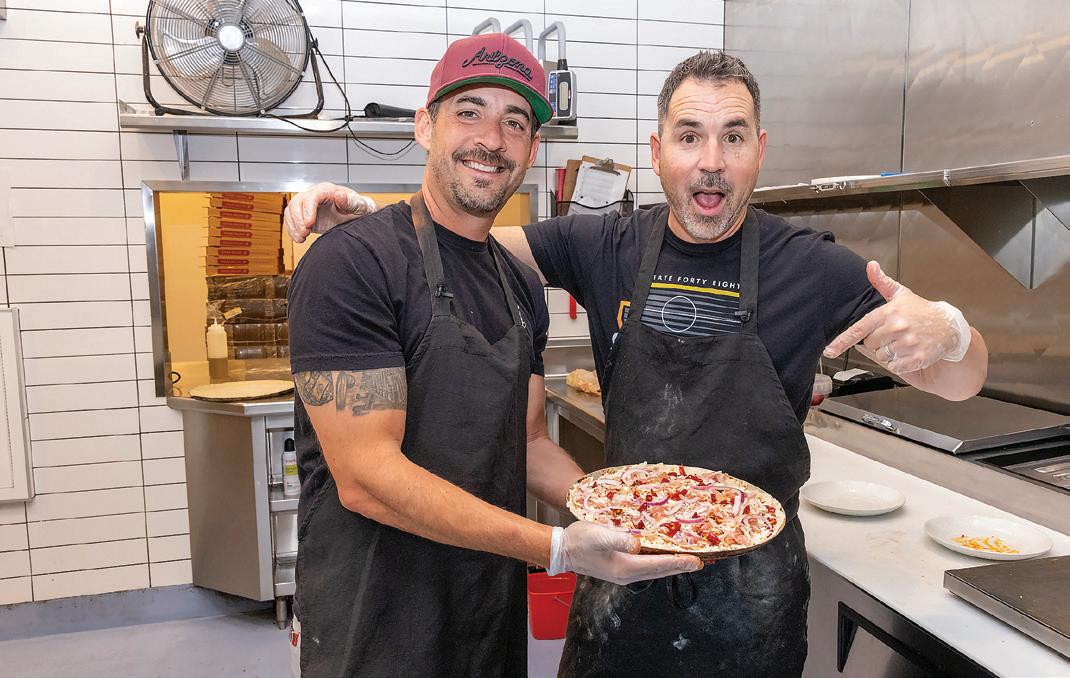
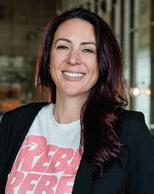
Erin Schultz, marketing director, Spinato’s Pizzeria & Family Kitchen, Tempe, AZ (six locations)
We implemented a vast bar education program for our staff in 2023. All servers and bartenders attended a beer education, a liquor education and a wine education class. In addition, we offered 15 opportunities throughout the year to tour local breweries, distilleries and wineries. The sole purpose for this education was for our staff to feel comfortable and knowledgeable when pairing, suggesting or upselling any beer, liquor or wine item from our bar. This accomplished a few things:
• It doubled down on our choice to move to primarily local products.
• Our team was inspired to be more invested and curious with the bar menu, and they were excited about these local products.
• Our staff was more confident when suggesting and pairing these items, with a significant increase of sales in the first six months after implementing this education program.
• It helped educate the guests and gave brand awareness and community support to local vendors.
• It gave our company a more solid standing to be able to later implement beer pairings and wine pairings in the future.

We also have a training team of five people, all with different focuses, and each restaurant has a certified trainer that works to continue to educate the staff at that location. This includes implementing incentive programs for upselling a variety of items, and staff engagement to keep upselling fun, like Bingo and contests.
“We offered 15 opportunities throughout the year to tour local breweries, distilleries and wineries. The sole purpose for this education was for our staff to feel comfortable and knowledgeable when pairing, suggesting or upselling any beer, liquor or wine item from our bar.”
Erin Schultz, Spinato’s Pizzeria & Family Kitchen
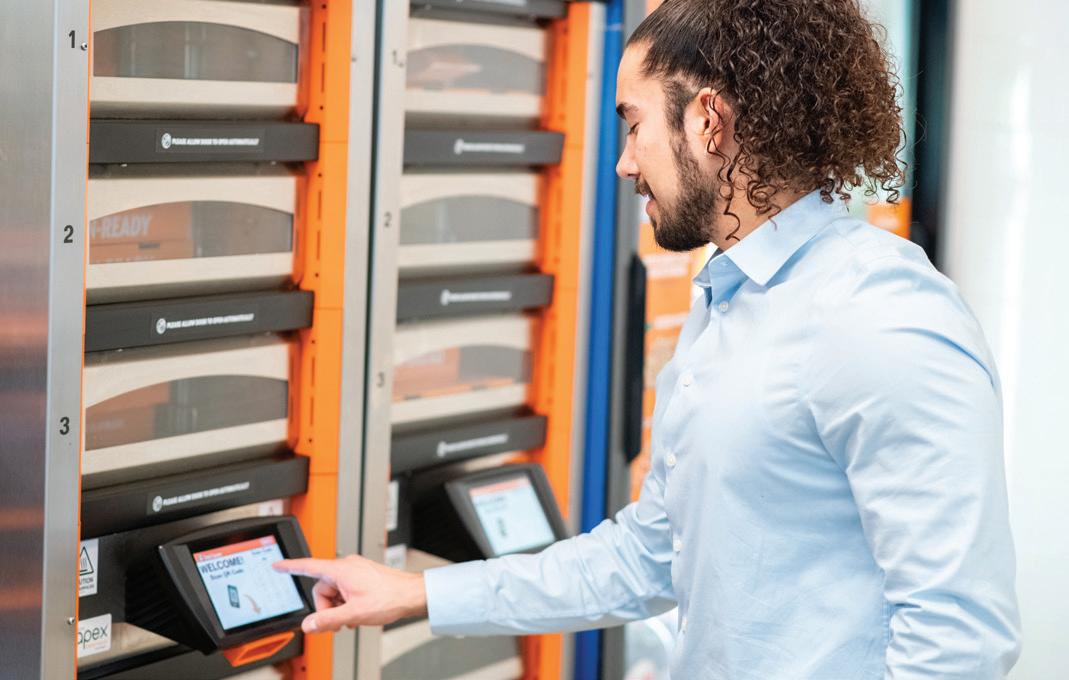
Vicki Dunn-Marshall,
CEO, The VDM Management Group (Little Caesars franchisee), Barboursville, WV
Keeping the guest’s needs first leads to brand loyalty and repeat business. And, if done well, upselling can help restaurant brands increase profit margins significantly— especially with side items that don’t cost as much for the restaurant.

For online and mobile app orders, the best way to upsell is by having visuals with limited messaging displayed during the checkout process that feature some of your best performing and fan-favorite add-ons. Pop-ups can be used to drive attention to limited-time offers as well—especially tied to special occasions such as football games, when consumers are inclined to make bigger purchases than during the regular weekday. Bundled offers can be another technique to upsell, providing greater value to each meal.
For in-store service, cater each suggestion based on what the guest is ordering. Not all recommendations will fit the needs or preferences of all guests. This can be done immediately after the guest orders pizza and before they’re done checking out. The way you deliver that recommendation is just as important—being conversational and making it about the consumer and how this is to their benefit, not that of the restaurant.
Training is the most important aspect of getting employees to understand how to upsell and to ensure that they see the value in doing so. The intent always has to be about the guest’s needs. This may include educating staff on ways to enhance their customer service skills and learning how to engage with guests. The ultimate goal is to know what other menu offerings would go well with the guest’s order. Having a clear understanding of the restaurant’s menu is key for success—ensuring we’re not just order takers but customer service experts. We have store contests and rankings on products to create engagement.
Knowledge is power, and details matter. Leverage the data that mobile apps and online orders gather from each transaction to get to know your guests. Pay close attention to how orders and preferences might shift depending on the time of day, week, etc., to make the right suggestion. It’ll also give you an inside look into how to modify the messaging you use for each user— families versus individuals, for instance.
Understand how a side item can enhance the order your guest has already built. Learning consumers’ behavior and order patterns can help you and your staff make the right recommendations that have the guest’s best interest at heart.
Tracy Morin is PMQ’s associate editor.
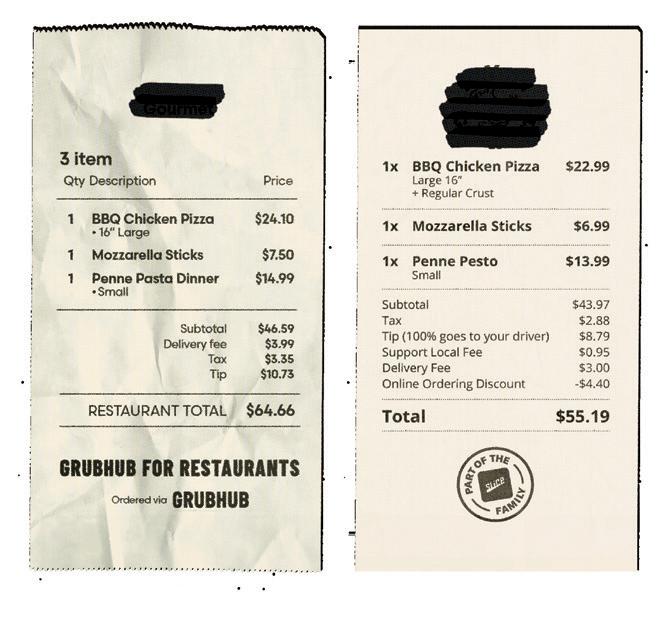
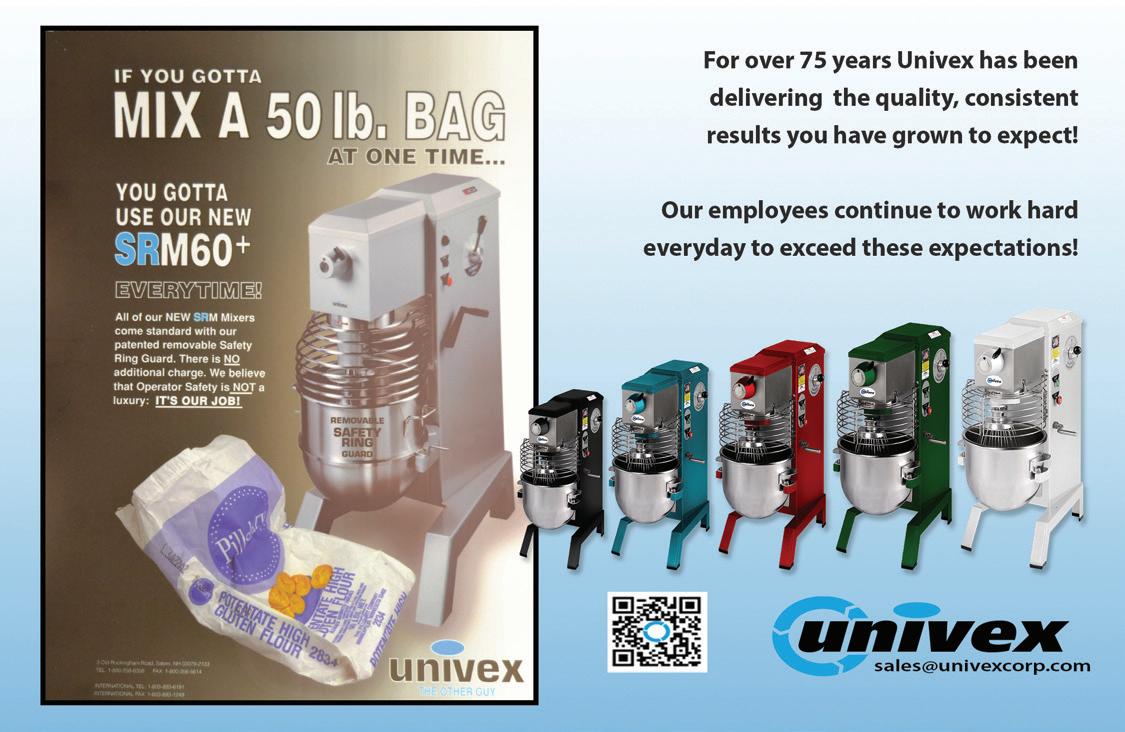
Pizzerias with eco-friendly operations can enjoy numerous benefits—for both the environment and their bottom line—but going green is not without its challenges.
BY TRACY MORIN
WHEN YOU THINK OF ADOPTING GREENER PRACTICES AT THE RESTAURANT, what do you picture: a more responsible—or even an indispensable— way of doing business, or an unnecessary hassle that will cost you loads of money? You might be surprised at the realities of making environmentally friendly changes, but they’ll likely bring challenges as well as many benefits.



The green movement has come a long way in recent decades, from a niche concern to one that touches the majority of Americans. “When we started in 1990, demand was committed but small,” says Michael Oshman, CEO and founder of the Boston-based Green Restaurant Association. “Now, three-quarters of the population wants to do the right thing when they can: 79% will give preference to dining at green restaurants, and 78% of employees prefer working at them. And it’s not just 18- to 35-year-olds—more people care, from older generations to teens.”
At Tutta Bella Neapolitan Pizza, with five restaurants and five nontraditional locations, making more sustainable choices has been a natural fit—after all, its headquarters sit in Seattle, where customers (and the city itself) champion environmental responsibility. “It’s embedded in our DNA, from our hiring to our mission
“Three-quarters of the population wants to do the right thing when they can: 79% will give preference to dining at green restaurants, and 78% of employees prefer working at them.”
Michael Oshman, Green Restaurant Association
statement to our day-to-day practices,” says Andrew Baumann, marketing manager. “We do food donations and repurposing, composting and recycling. We sweep the sidewalks versus using water. We use compostable packaging and eco-friendly toilets and light bulbs. And we went strawless a few years ago.”
When the Green Restaurant Association certifies restaurants, it evaluates seven key categories to consider if you’re thinking of greening your own operation:
• Reusables and disposables
• Chemicals and pollution
• Building and furnishing
• Education and transparency
• Water
• Waste
• Energy
• Food
In terms of affordability, Oshman points out that many green options have far lower costs than they used to—think solar panels, LED lights and electric cars. “And by reducing water, energy and waste, restaurants can end up saving $1,000 to $5,000 per year,” Oshman adds. “Other things may cost more, like buying green cleaning products—so, in reality, it can all balance out.”
Meanwhile, at Infinitus Pie, with four locations and a food truck in Colorado, founders “Pizza” Pete Crouse and his daughter, Katie, focus on several eco-minded initiatives, including more responsible menu items.



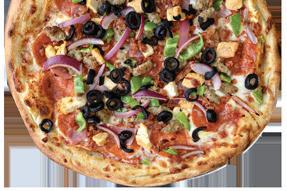
boxes are the indus tr y s t andard in ge in piz za kitchens worldwide But not ated equal. Our new mini dough boxes esigned for smaller kitchens and cramped nmatched s trength and durabilit y.
h and durabilit y outlas ts plas tic otec tion and safe s torage roofing, and cooling n s tandard MFG dough boxes or sag







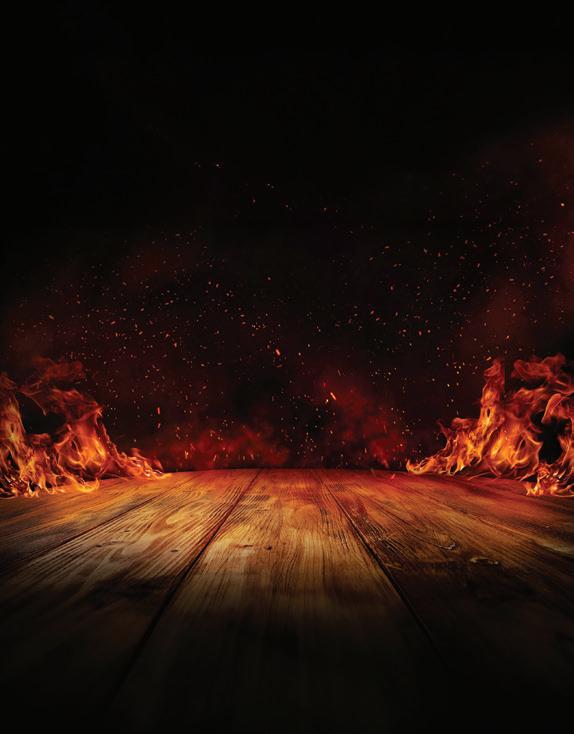

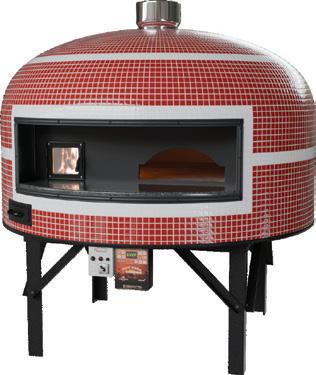

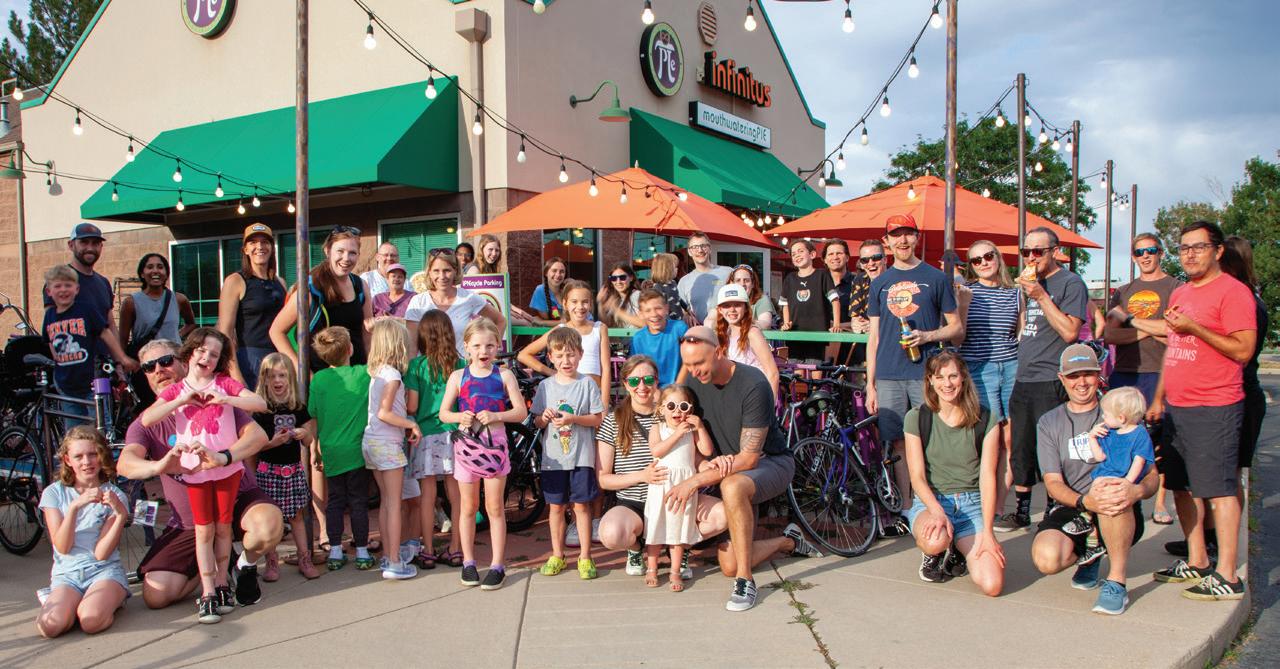
“Find employees to manage a program in the restaurant, then [if you have multiple locations] take it to the company as a whole.”
Andrew Baumann, Tutta Bella Neapolitan Pizza
“A major factor in resource and fresh water consumption, and air and groundwater pollution, is the diet we eat— concentrating plant material into animal proteins has massive consequences,” Crouse explains. “Infinitus has a robust vegan menu to proactively address this paradigm. While we sell only about 5% vegan products, ultimately our communities would be well-served by an aggressive move toward plant-based diets. In Colorado, we see movement toward this direction, and we are agents of change to inspire the move by making delicious vegan pizza.”
In addition, to encourage greener transport to and from the pizzeria, Crouse built dedicated bike racks at his stores. “It’s better to burn calories than hydrocarbons,” he says. “To inspire people to ride and use our rack, we reward bikers with free fountain drinks or $1 off draft beers.”
Whatever methods you choose to implement, Oshman notes that all operators can start with simple steps, like setting up a recycling and/or composting program;
finding greener cleaning options; investing in efficient spray valves and aerators; switching all lighting to the highest efficiency level; and adopting an “only upon request” policy for dine-in guests’ freebies, like water or bread.
For takeout and delivery orders, ask customers to opt in if they want extras like utensils, straws, condiments, etc. Serve pies in 100% post-consumer recycled pizza boxes—though Oshman hopes reusable containers, through a deposit-based system, will be the way of the future.
As the song goes, it ain’t (always) easy being green. While Infinitus Pie’s goal has been “to make a difference while we make a living,” Crouse emphasizes that he purposely left the word “sustainability” out of his business’ mission. “We thought the word was diluted from overuse, and the last thing we wanted was to be greenwashing,” he says. “We like to measure success in People, Profit and Planet, the 3 Ps. True sustainability requires a willingness to sacrifice profit to achieve the goal of mitigating the environmental impact of running a restaurant.” Unfortunately, Crouse finds that sustainability is widely misunderstood, due to “a serious lack of education about the choices, sacrifice and follow-through required to foster sustainability—by both companies and customers.”
Operators who are trying to be more eco-responsible may also need to tweak as they go. For example, a voluntary solid waste program didn’t go as planned

in Crouse’s locations. “Even with all of our efforts at education, customers continually contaminated the compost with non-compostable waste,” he says. “A-1 Organics, which was hauling all of the compostable material, finally pared down their acceptable material to food scraps and grass clippings. Because we were using compostable packaging in our operations, the switch ended our composting effort, because our food scraps were comparatively small. Now we only recycle, and the balance goes into the solid waste landfill.”
Infinitus Pie’s solid waste program also cost about $600 per month, or $7,200 annually, for compostable trash bags, carryout containers and the compostable hauling.
Ultimately, Crouse understands that sustainability is a give-and-take proposition, and he’s committed to the cause—and hopes it spreads further through the industry. “These things are hard and make it more difficult to make a profit,” he says. “I suspect most businesses would not want to make the sacrifice to achieve sustainability goals. But, in time, we want to be a transformational business model, hoping these principles drive our success and inspire other companies to copy our methods.”
Despite potential challenges, Baumann believes that customers and employees alike feel good about the environmental mindfulness at Tutta Bella, where sustainability-related choices are priced into the cost of operations. He recommends that other operators
Eye-catching bike racks at Infinitus Pie promote fuel-free travel to and from the pizzeria.
“It’s better to burn calories than hydrocarbons. To inspire people to ride and use our [bike] rack, we reward bikers with free fountain drinks or $1 off draft beers.”
Pete Crouse, Infinitus Pie
get started by recruiting eco-minded employees to spearhead efforts. “At one location, 20 years ago, an employee did composting at home and would take home food scraps, which made us research what we could do on a bigger scale,” Baumann says. “Find employees to manage a program in the restaurant, then [if you have multiple locations] take it to the company as a whole.”
You’ll also want to advertise your efforts to customers. Tutta Bella posted its first food donations on social media. Osherman cites one restaurant that sends its compost to a composter, which uses the compost to grow mushrooms that the restaurant then buys back to feed its guests. Telling this kind of compelling story on social media and in-store grabs customers’ attention.
Infinitus Pie is also “aggressive about communicating our efforts to our fans and community,” Crouse says. “It did create a strong emotional connection with a contingent of our fan base—for sure, different demographics were more supportive, and it gave us a small competitive advantage. These are proactive structures we created to make a measurable difference while we earn a living. It’s in our heart. We approach business from a humanist point of view. Our business is of people, by people and for people. Our staff turnover is pretty low, our cultures are strong, and staff appreciates work being more than the P&L.”
Baumann’s advice: Just start somewhere. “The snowball effect will lead to somewhere great,” he says. “Get ideas from your employees and network with local groups. Work with your suppliers on eco-friendly packaging. Identify areas where you’re wasting food to cut down and donate extras. You’ll feel good about yourself, and you’ll do good for the community and for the future. We’re all in this together.”
Tracy Morin is PMQ’s associate editor.
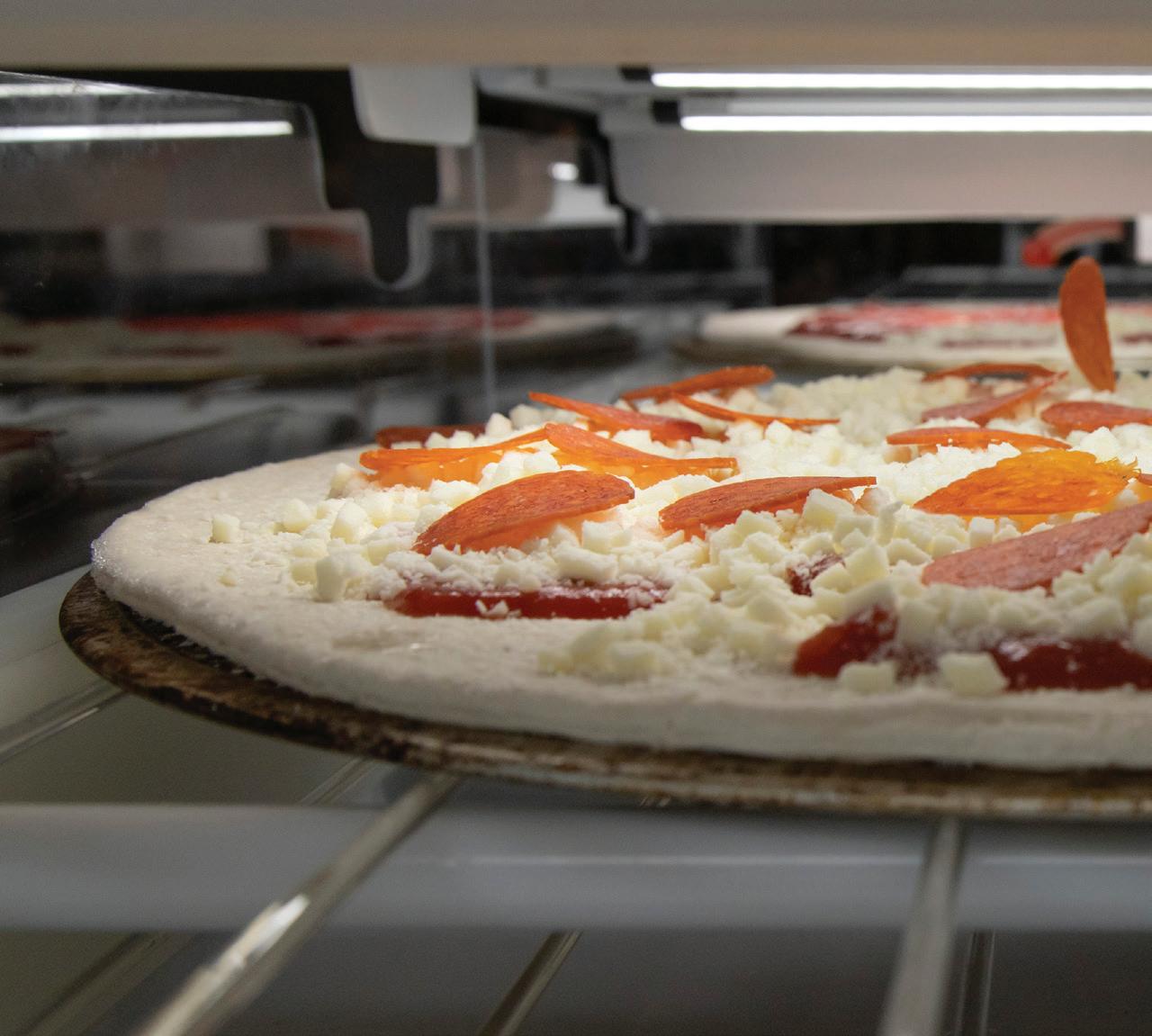

Why hasn’t automation taken off in the pizza industry? Two experts share their theories— and make it clear that a revolution remains inevitable.
BY CHARLIE POGACAR
Advances in technology have helped some pizzerias cut back on labor and up their consistency.
TECHNOLOGICAL PROGRESS CAN BE DIFFICULT TO FORECAST. Look back at what future-minded people 100 years ago believed would be commonplace in the 21st century, and it’s all flying cars, teleportation devices and colonies on the moon. This applies to the restaurant industry, too. For at least five years, pizzeria operators have been hearing about burger-flipping robots and other related automation in the restaurant space. More recently, large, elaborate pizza making machines have been demoed at industry events, but how many people have actually seen one employed by a pizzeria?
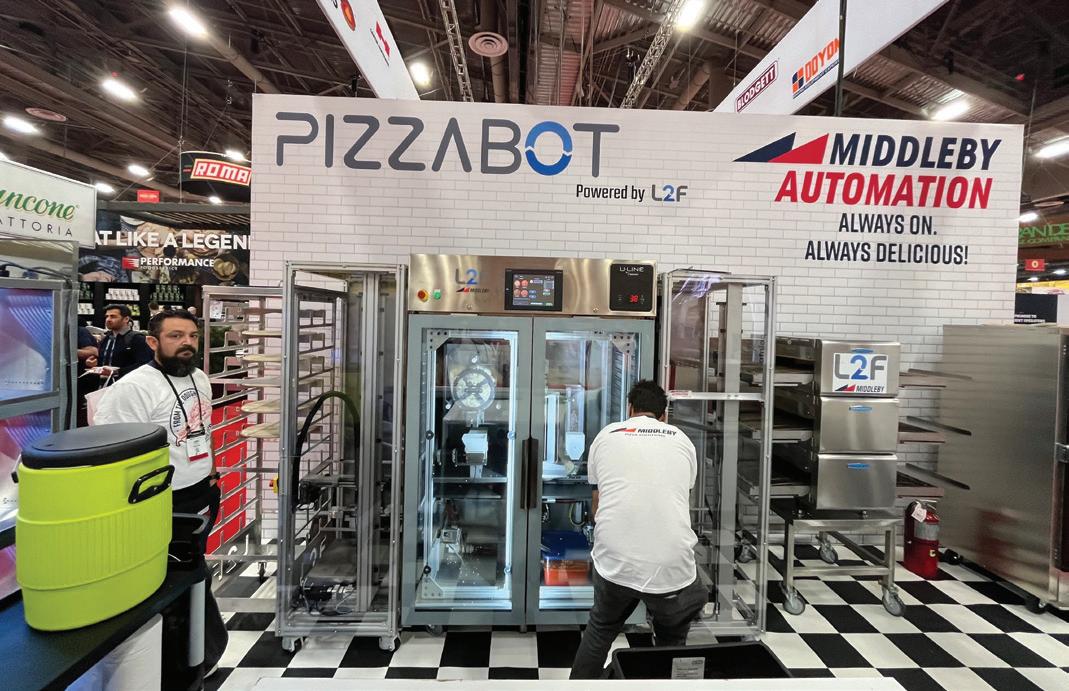
The hotly anticipated “robot revolution” seems to be moving at a slower pace than was once expected, especially in the pizza industry. Will robots ever materialize in a widespread way across the industry? Why aren’t more pizzerias using robots now?
To explore this topic further, PMQ spoke with two industry professionals who believe passionately in the future of pizza automation technology: Tom Kunkel, an executive advisor to RoboChef with years of experience in restaurant automation, and Andrew Simmons, who has been on the frontlines of pizza automation at Mamma Ramona’s, his San Diego-based pizzeria chain that aspires to operate on a high-automation, low-labor model.
According to both Kunkel and Simmons, pizzeria automation hasn’t stalled so much as it has run into headwinds getting in the way of adoption. One problem, Kunkel believes, is that while technology keeps advancing, the industry is still trying to figure out “how to integrate it into the daily workflow.” He highlights the inconsistency in adoption rates among pizzerias and other restaurants, while noting that automation is more common in university dining halls, casinos and large chains that serve pizza. Those are the operations that rely most heavily on inexperienced labor, Kunkel notes, and also have more money to cover the overhead that some automated equipment might call for.
“There’s definitely stigma. Operators worry that robots will disrupt the human element in making pizza, especially at independent shops.”
Tom Kunkel, RoboChef
As a pizzeria operator and franchisor, Simmons has personal experience with early adoption, an experience he has written about extensively on LinkedIn. His posts serve as a journal of sorts to document the wins, losses and complications associated with being a pioneer in pizzeria technology. He also made an appearance on Peel: A PMQ Pizza Podcast to break down some recent developments in his journey.
After acquiring a pizzeria in 2020, just a month before the pandemic shut down operations, Simmons invested heavily in automation, purchasing dough presses and a pizza making robot from Picnic to streamline operations and reduce labor costs. “I thought I was ahead of the curve, but the resistance from my staff was unexpected,” Simmons says. “Never mind that the employees wouldn’t show up anyway to their shift at 5:00 on a Friday. They’d be, like, ‘Hey, there’s this cool party I’m going to. I’m
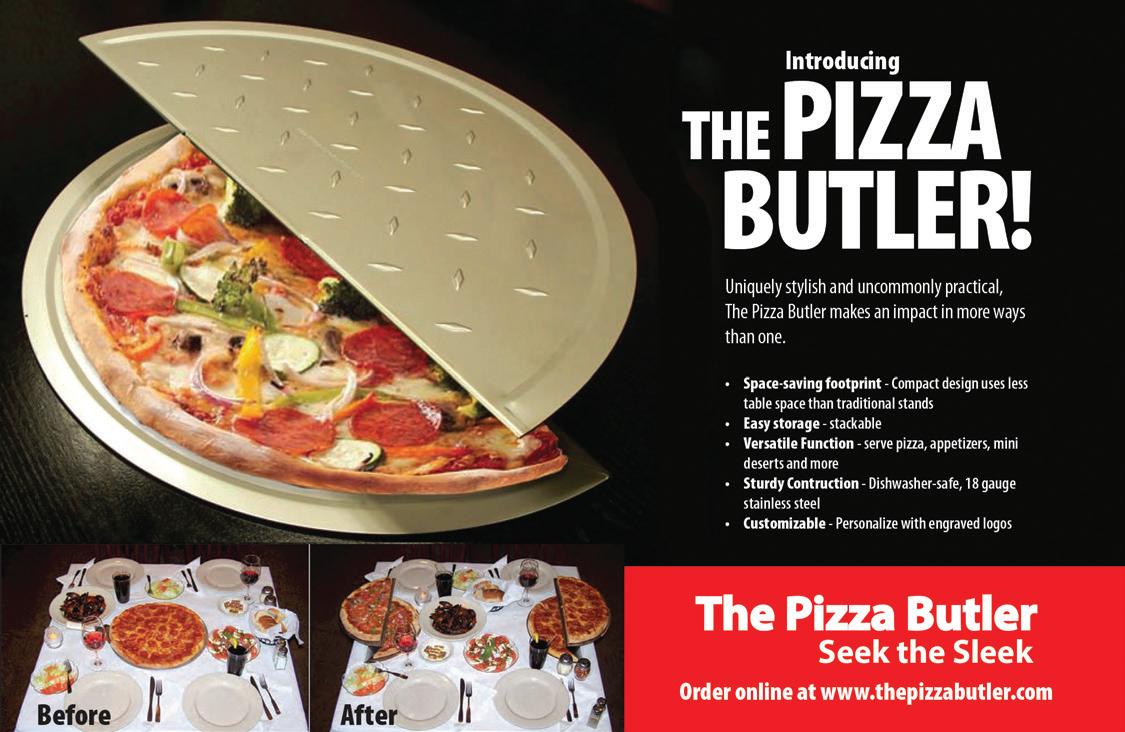



“I thought I was ahead of the curve, but the resistance from my staff was unexpected.”
Andrew Simmons, Mamma Ramona’s
just not gonna come [into work]. So you’re on your own.’ I’m, like, ‘And pizza? You know, without you, we can’t serve it?’”
The resistance went beyond Simmons’ own team and extended to the local community. Customers grew concerned that automation equated to job loss, leading to a backlash against his first pizzeria in Ramona, California, a small town northeast of San Diego. “People weren’t ready for it,” he says, reflecting on how he had to scale back his automation efforts. Simmons saw plenty of ire on social media channels and even alleges that a town official orchestrated frequent “random” health inspections—all in retaliation for a friend that Simmons had laid off from the pizzeria.
The community pushback Simmons experienced speaks to a larger issue in the industry: resistance to change. “There’s definitely stigma,” Kunkel says. “Operators worry that robots will disrupt the human element in making pizza, especially at independent shops where owners often feel the personal touch is a key part of their brand.”
Beyond that stigma, equipment cost has been another major hurdle in adoption. But that’s changing rapidly, Kunkel says, noting that much of the equipment is now within financial reach for a larger group of operators. Most automation vendors, he points out, offer financing for their machines. So it becomes a simple math equation: Is a monthly payment on a given piece of equipment more or less affordable than paying employees to do the same job?
Regardless, the total investment, including installation and maintenance, can still be daunting, especially for smaller operators. Simmons spent more than $300,000 on upgrading his first Mamma Ramona’s store—although not all of that money was spent on technology. He ultimately had to cut some automation tools when they didn’t deliver the expected ROI.
For example, Simmons says, “The Picnic system worked, but, in the end, it wasn’t enough to offset the resistance and other costs we faced.” Still, he remains optimistic about the future of automation, predicting that costs will continue to drop and more efficient models will hit the market by 2025.
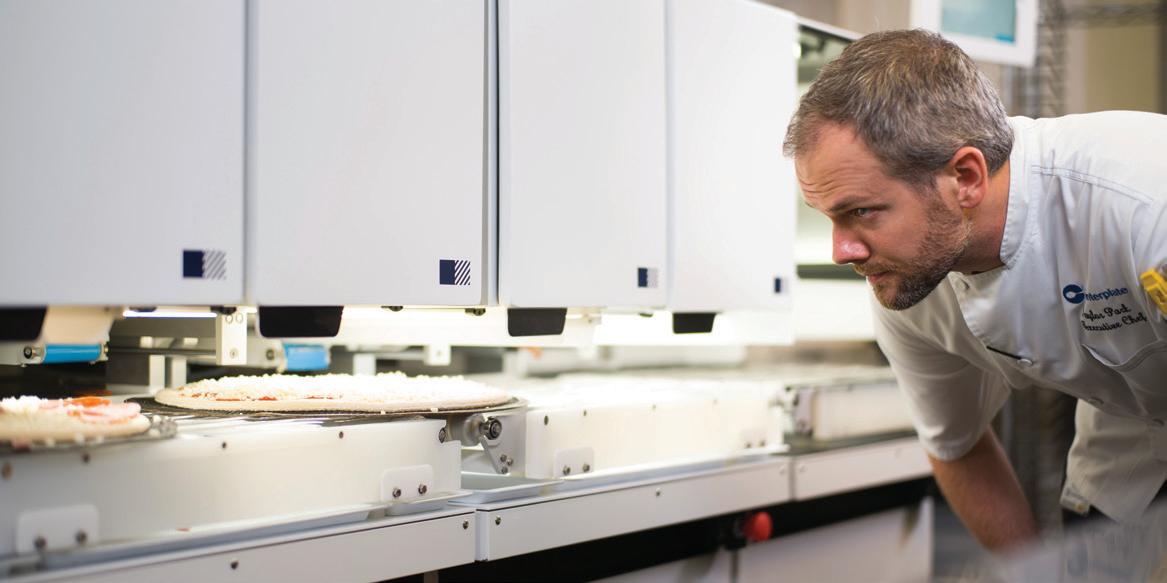
“As labor costs rise and the technology improves, more operators will have no choice but to adopt automation, whether they want to or not.”
Tom Kunkel, RoboChef
While independent operators have been slower to adopt high-tech equipment for their kitchens, larger chains are beginning to test the waters. They’re just not talking about it publicly.
“You hear whispers,” Kunkel says, referencing unnamed chains reportedly testing out unnamed types of automation. But details on widespread implementation have been scarce, indicating that the industry giants are still in the trial phase. Or perhaps, stories from the likes of Simmons and other early adopters have made the chains a bit gun-shy about sharing too many details.
Simmons, however, believes it’s really the opposite: While smaller, independent pizzerias are more wary of automation due to concerns over costs and community backlash, chains have a greater ability to absorb those risks. Plus, the chains have a lot more to gain if a given piece of equipment shows a considerable return on investment. “When you have hundreds of locations, the ROI on robots makes a lot more sense,” he says.
Additionally, minimum wage hikes around the U.S. appear likely to accelerate the use of robotics in pizzerias. With states like California setting higher minimum wages—as much as $20 per hour for fast-food workers— automation may become not just an attractive option but a necessity for pizzeria owners looking to manage their labor costs. “It’s not just about saving a few bucks—it’s about survival,” Kunkel says. “As labor costs rise and the technology improves, more operators will have no choice but to adopt automation.”
There’s one last piece of the puzzle that will push automation onto the front lines, Kunkel notes. “The expectation of consistency in the dining experience is only growing. On top of that, more and more people have grown accustomed to the idea that every meal is tailored to them. This is another place where automation offers a better way forward, and as more restaurants adopt the technology, the ones who don’t will struggle to keep up.”
Despite the slow adoption pace and public resistance, both Kunkel and Simmons see a future where automation will play a key role in the pizzeria business. “It’s inevitable,” Kunkel says, emphasizing the efficiency and consistency that automation brings to the table.
For Simmons, the key is to stay flexible. “I’ve learned a lot in the last few years,” he says. “The trick is figuring out how to integrate robots in a way that makes sense for your business, without losing the personal touch that customers expect.”
As the industry moves forward, it’s clear that the robot revolution isn’t dead—it’s just unfolding more slowly than many predicted.
Charlie
Pogacar is PMQ’s senior editor.
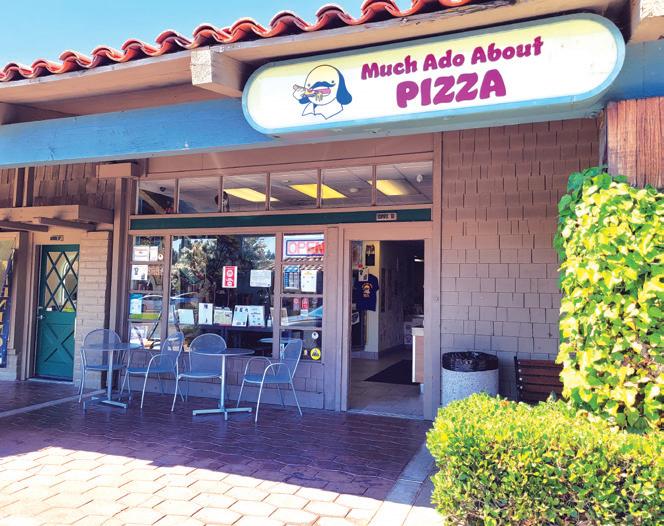
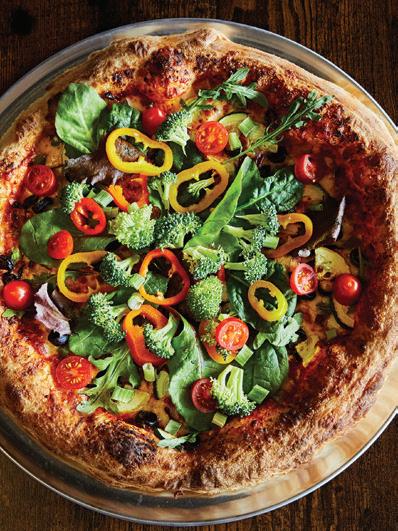
The course of opening a pizzeria never did run smooth, but Kira and Mark Zabrowski would make Shakespeare proud at Much Ado About Pizza.
BY BRIAN HERNANDEZ
KIRA AND MARK ZABROWSKI’S SHARED LOVE FOR Shakespeare inspired the name for Much Ado About Pizza in Pleasanton, California. PMQ caught the couple between acts to learn how they made their own midsummer night’s dream of pizzeria ownership come true.
Brian Hernandez: How did Much Ado About Pizza get started?
Kira Zabrowski: During the pandemic, I started baking a lot of sourdough bread, which led to curiosity about making pizzas as well. Mark got me the Ken Forkish book, Flour Water Salt Yeast, and learning about all the recipes and the levain process really helped get me through
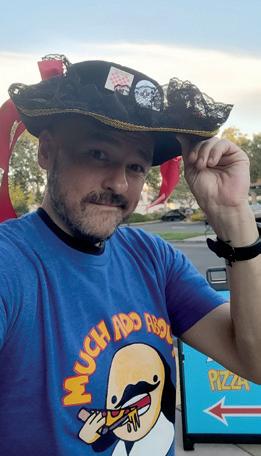
my days teaching online. After being in the classroom for 25 years, it was a hard transition and especially difficult to teach theater and English online. I would sneak downstairs to make bread as often as I could. I got to the end of the book and used all that knowledge on making pizza.
Mark Zabrowski: We started with the classic recipes like biga and poolish, then we continued down the rabbit hole. Once we hit sourdough, we decided we absolutely must try this with pizza. Then, one day, Kira just looked at me and said…
Kira: “I think I want to start a pizzeria.”
Mark: I said, “That’s a terrible idea.” I tested the waters and told her she needed a business plan before we went further—just to gauge her seriousness. We filed for an LLC...so we could attend [Pizza Expo] and met some amazing pizza people while we were there. The list of inspirational people we got to meet was insane.
Kira: The Women in Pizza [organization] caught my eye immediately. I said, “I want to be a part of that.” The more people we met, the more I felt like we belonged here. I also competed [at Pizza Expo] and finished fourth. I was uber-inspired then! We got home, and I finished up the business plan and said, “Here we go.”
Hernandez: What are the challenges of running a two-person pizzeria?
Mark: [Our soft opening] taught us a lot. We were more worried about what the pizzas tasted like than the actual organizational operations of the pizzeria, but we found out the hard way, when he had 10 pies stacked on top of each other, waiting to go in.
Kira: We’re a smaller operation, and we learned from that experience. We’re a little slower since it’s just the two of us, but we’d rather be a little slower than set unrealistic expectations, and the customers understand and appreciate that. Just recently, we were selected as one of five finalists in the Perfect Pitch Competition at the Fast Casual Executive Summit in Denver this month. We’ll pitch our brand to a panel, and if we are chosen, we get a cash prize, but we also get a consultant to come in for six months. That would be so helpful, but, either way, this experience is going to help us grow.
Hernandez: What has your experience with online ordering been like?
Mark: When you’re on the phone, it’s very hard to concentrate on taking the order, making pizzas and dealing with in-store customers. Whether on the phone or in the store, the customer expects that the employee’s sole job is to talk to them and take their order. We all know when you’re small, you have all the jobs. Online ordering takes care of that for us. The disadvantage is that everyone gets hungry and orders at the same time, without fail.
Kira: But by accepting preorders, we can set up the schedule, and we’re conditioning our customers. They’re
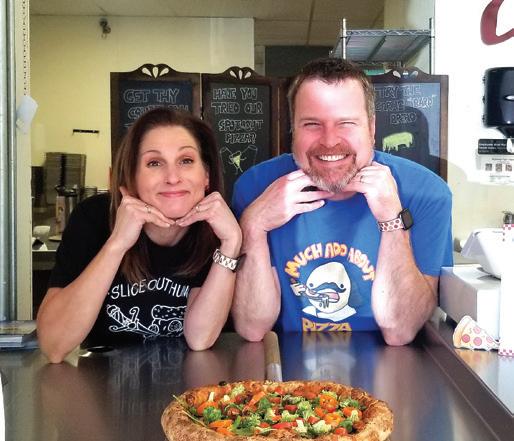
learning to be a little flexible or plan ahead. And it’s easy when they walk in and just show me their order. Boom. Done. I don’t have to mess with the register or anything.
Hernandez: What about third-party delivery?
Mark: With third parties, you don’t have control of the product all the way to the door. That can be problematic in a lot of ways. Insert your own horror story here. The problem was all that was done by what we call the fourth party. You have the POS, the online platform, the thirdparty delivery, and then the customer. The layers of accountability get muddled, and it’s hard to correct any problems, regardless of whether they’re your fault or not. The customer doesn’t typically get mad at the delivery party, they get mad at the pizzeria.
Kira: With insurance laws in California and, for our size, it still makes sense to use them, though. And they do allow pickup orders, and they market you with their money.
Mark: It’s nice to have the option, and I think we could spend those marketing dollars better elsewhere, but baby steps.
To learn more about the Zabrowskis’ experiences as U.S. Pizza Team members and how they created the Much Ado About Pizza concept, read an expanded version of this Q&A at PMQ.com/ muchadaboutpizza.
For more information about the U.S. Pizza Team, its members and sponsors, visit USPizzaTeam.com.

Don’t miss your chance to compete—or just cheer from the sidelines—at the World Pizza Championship in Parma!
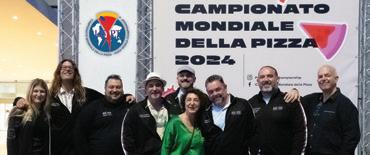

Ready for an epic pizza adventure? Register now to join the U.S. Pizza Team in Parma, Italy, for the Campionato Mondiale della Pizza! Enjoy competition, delicious meals, beachside relaxation—and, oh, yeah, don’t forget your airfare, or we’ll wave to you from the plane as we fly off without you!
INCLUDED IN YOUR ITALIAN ADVENTURE:
• 10 days room and board
• Meals
• Transportation and translation
• Entry into the Campionato Mondiale della Pizza
• 2 days at exotic beach location after competition
• Team uniform
Cleveland, OH 44114-2529
Superior Ave #2600, Cleveland, OH 44114-2529
#2600, Cleveland, OH 44114-2529
Superior Ave #2600, Cleveland, OH 44114-2529
Superior Ave #2600, Cleveland, OH 44114-2529
1111 Superior Ave #2600, Cleveland, OH 44114-2529
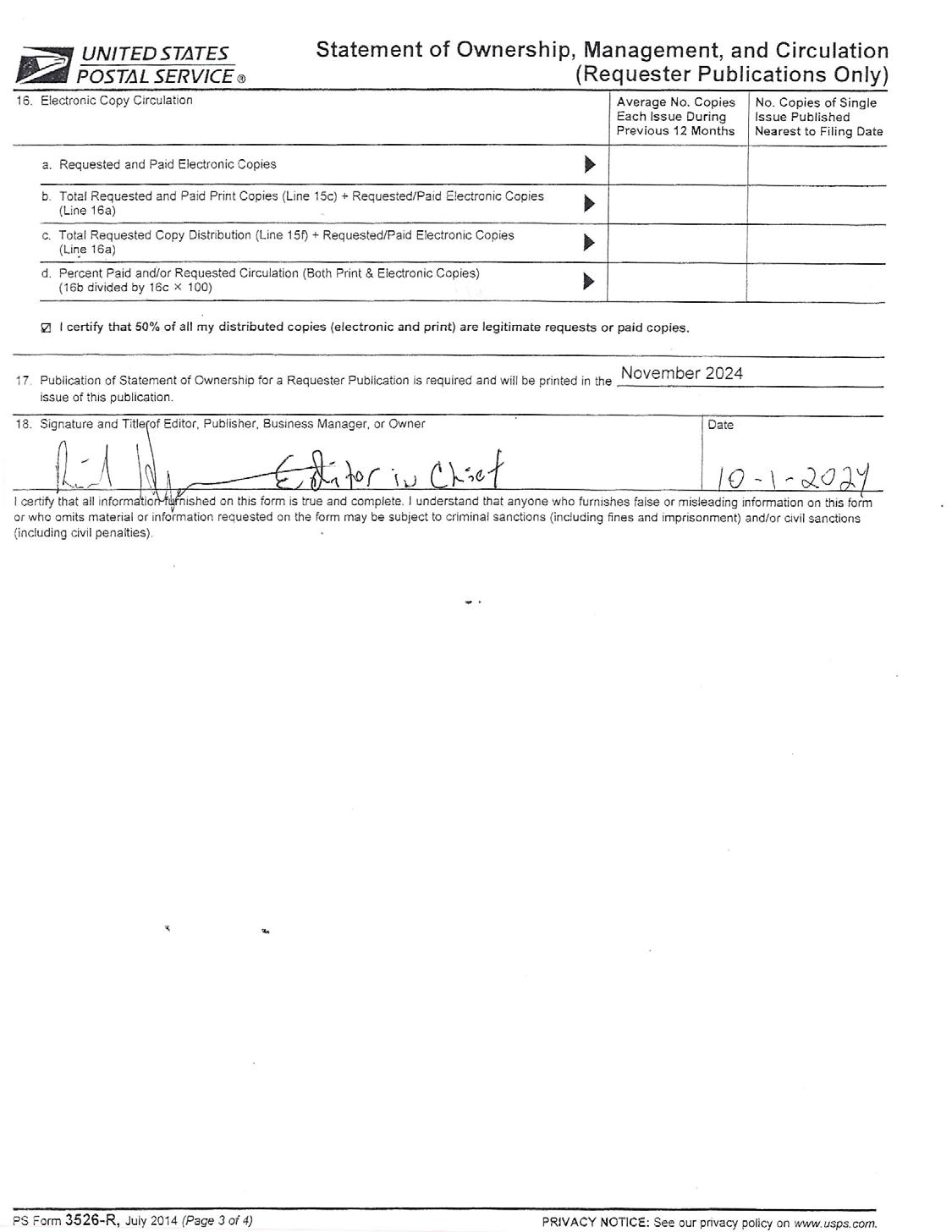


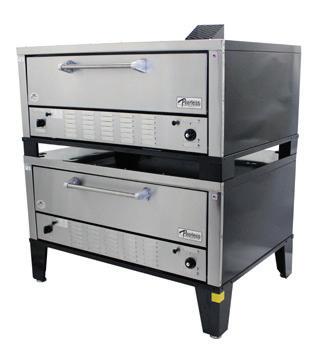


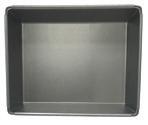
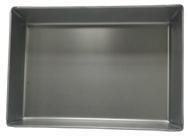



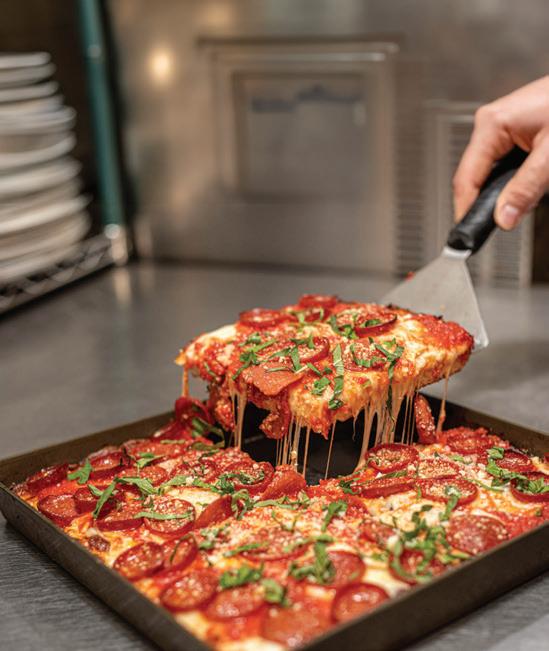





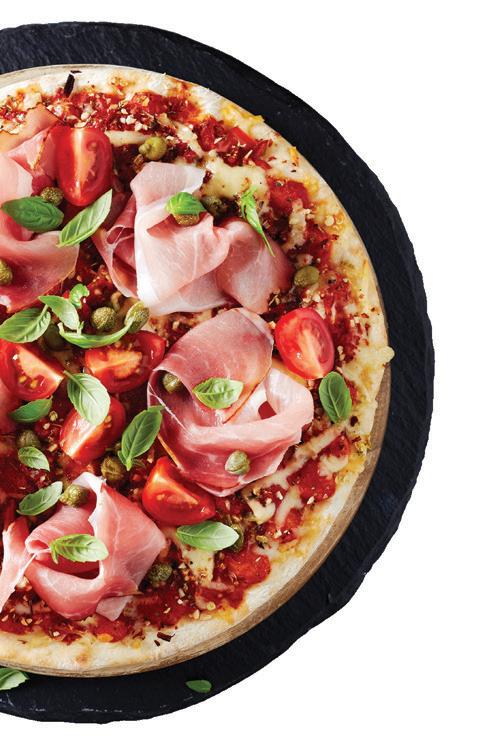
Craving the freshest insights into the pizza restaurant industry? Subscribe to PMQ’s e-newsletter, Pizza Pulse, and we’ll fill your inbox with:
• Hot-from-the-oven pizza industry news delivered three times per week (Monday/Wednesday/Friday)
• Moneymaking promotions from leading independents and chains
• Proven marketing strategies to boost your pizzeria’s sales
• Pizzeria success stories and expert insights
SIGN UP FOR FREE AT PMQ.COM/SUBSCRIBE!
























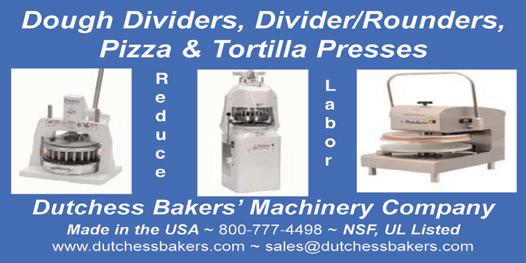











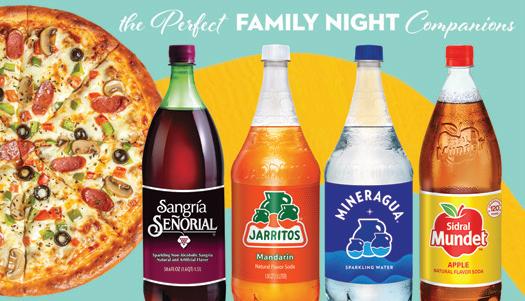




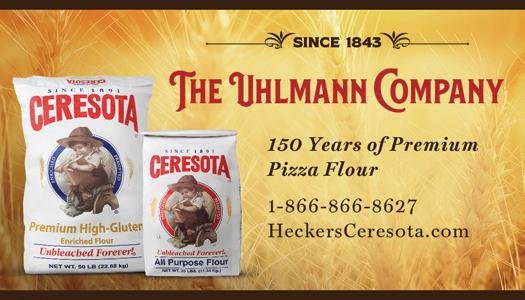






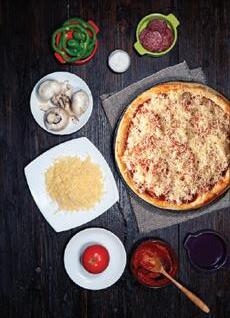


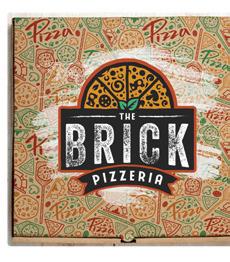







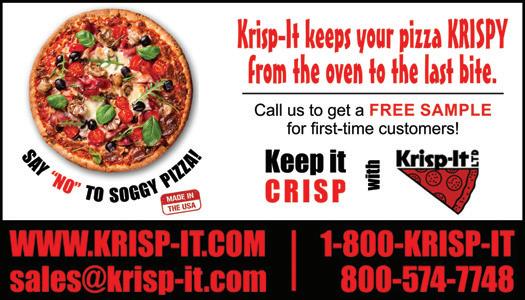

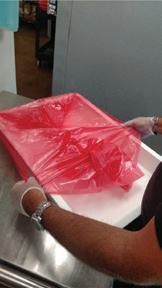
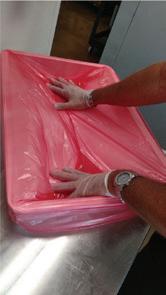

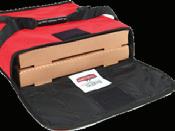

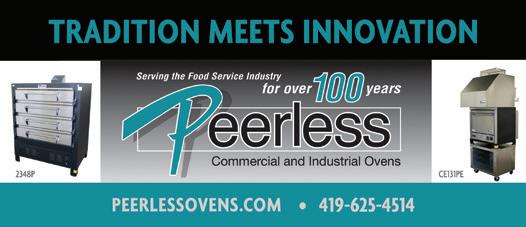




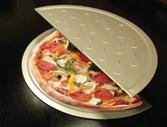



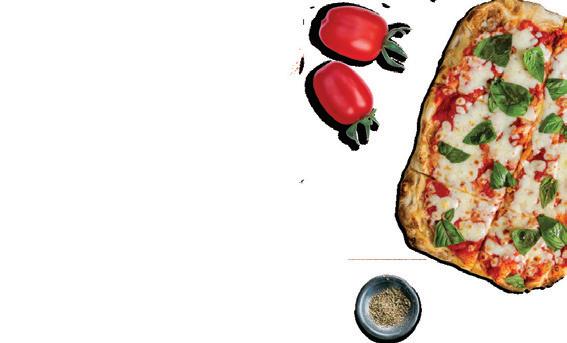



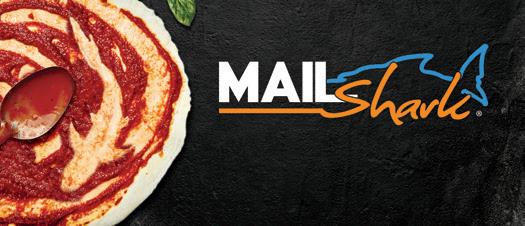










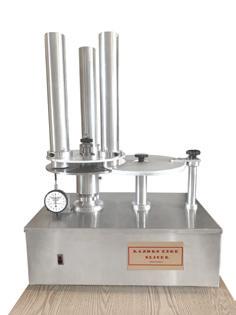


(Clockwise from top left) Dave and Jim Pallone assumed Massey’s operations in 1999, then passed it to their sons; a marching band passes the Gahanna, Ohio, location in 1987; Whitehall, Ohio, near Columbus, was the original hometown of Massey’s; the pizzeria added a Sicilian Deep Dish option to compliment its iconic thin-crust style.
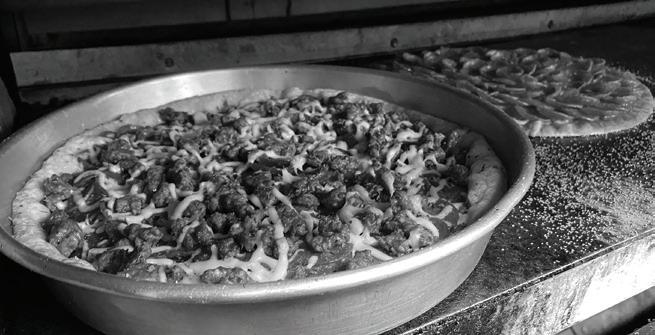
After introducing pizza to guests at their Italian restaurant, brothers Jim and Dan Massucci decided to open a dedicated pizzeria, Massey’s Pizza (using an Americanization of their last name), in Whitehall, Ohio, in 1949. “He wasn’t the first to have pizza in Columbus, but he was the first pizzeria,” recounts Richard Folk, current CMO of Massey’s, now based in Reynoldsburg and grown to six corporate-owned and nine franchise locations. “Legend has it that Jim Grote worked there before he started Donatos. Massey’s has a Columbus-style pizza: thin, crunchy, cut into squares, with plentiful toppings all the way to the edges. We cook on a layer of cornmeal, no pans involved, in big, steel, bakery-style ovens.”
The Massuccis sold in 1962 to Guido Casa, who ran the business with his son, Phil, until 1999. Phil’s distant cousins, brothers Jim and Dave Pallone, then assumed operations before passing it on to their sons, Nick and Dominic, who run the pizzeria today. Folk himself joined the business 25 years ago—Dave Pallone was his father-in-law—and the operation remains a family affair, with several members still involved. “A lot of people categorize us as chain pizza, because we have multiple locations,”
BY TRACY MORIN
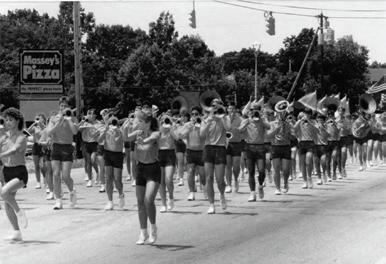
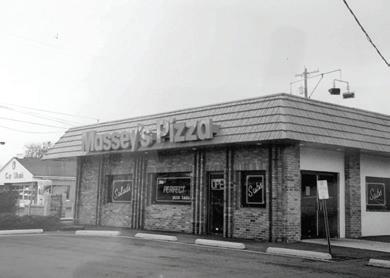
Folk says. “But with Massey’s, people need to realize there’s an owneroperator behind every location who just wants to make a good living.”
Some of the locations are more complex than others, like the four outposts of Massey’s Pizza Sports Bar & Wings, which have expanded menus and full bars. Shipping pies nationwide—sold in four-packs of the flagship pepperoni pie, featuring 155 meat slices—helps bring a taste of home to customers who have moved away (one of whom brought a Massey’s franchise all the way to Pawleys Island, South Carolina). And Massey’s is making an active push to add more franchisees to the mix, recently hiring a firm to help market to potential entrepreneurs. “We spend a lot of money building the brand and making people hungry with our ads, rather than discounting, and we already have a few locations in Columbus we’re excited about getting a franchisee into,” Folk says. “Massey’s is a really strong brand, with a cult-like following. Even in downturns—recessions, COVID—we weather the bad times.”
Tracy Morin is PMQ’s associate editor.
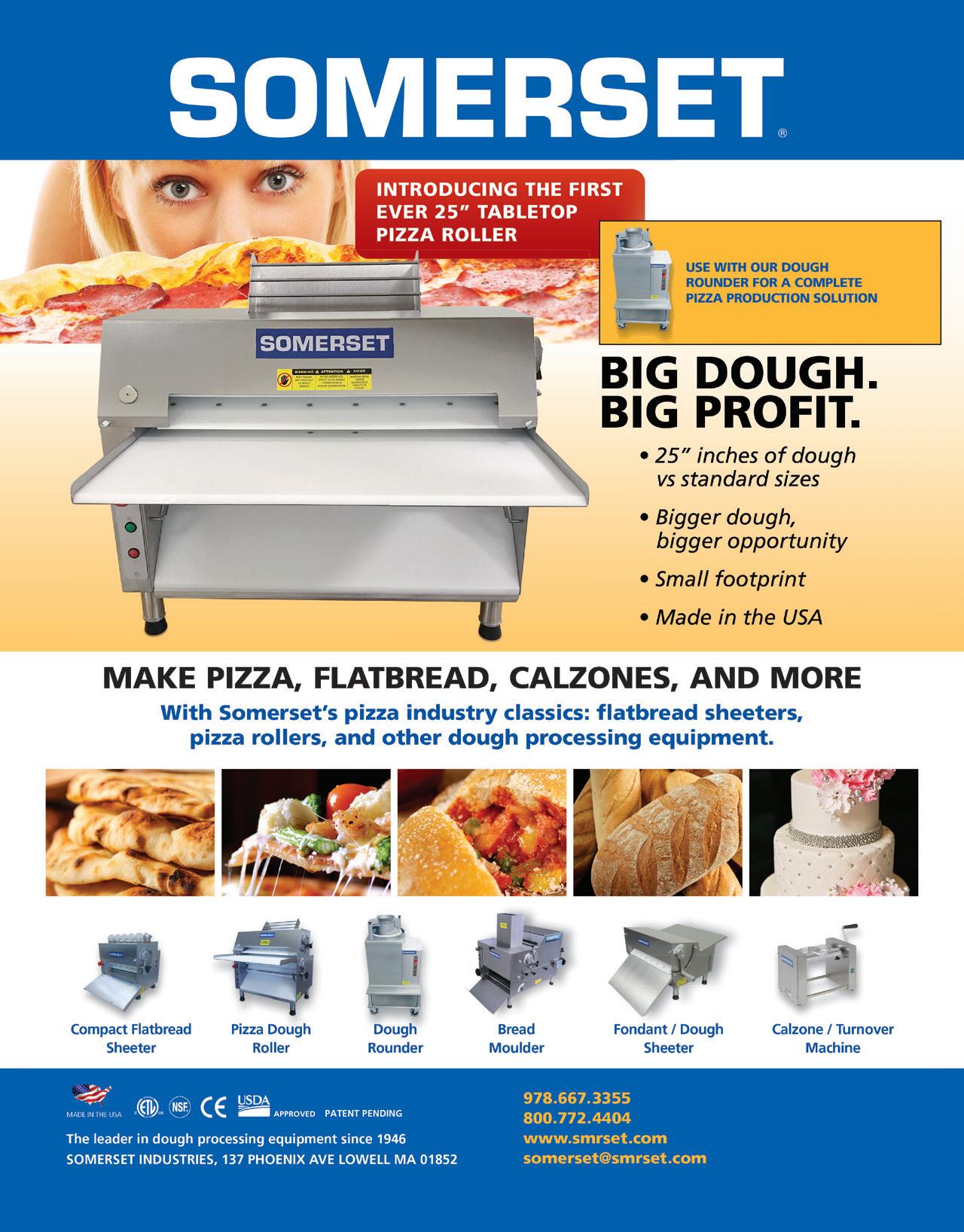

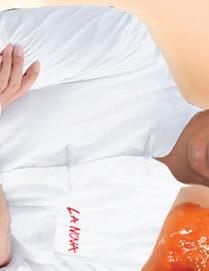

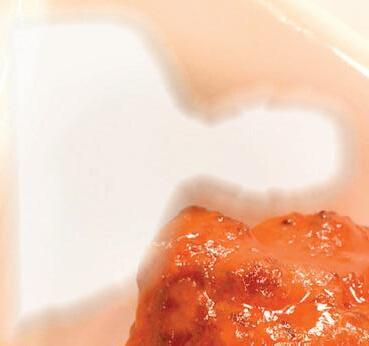







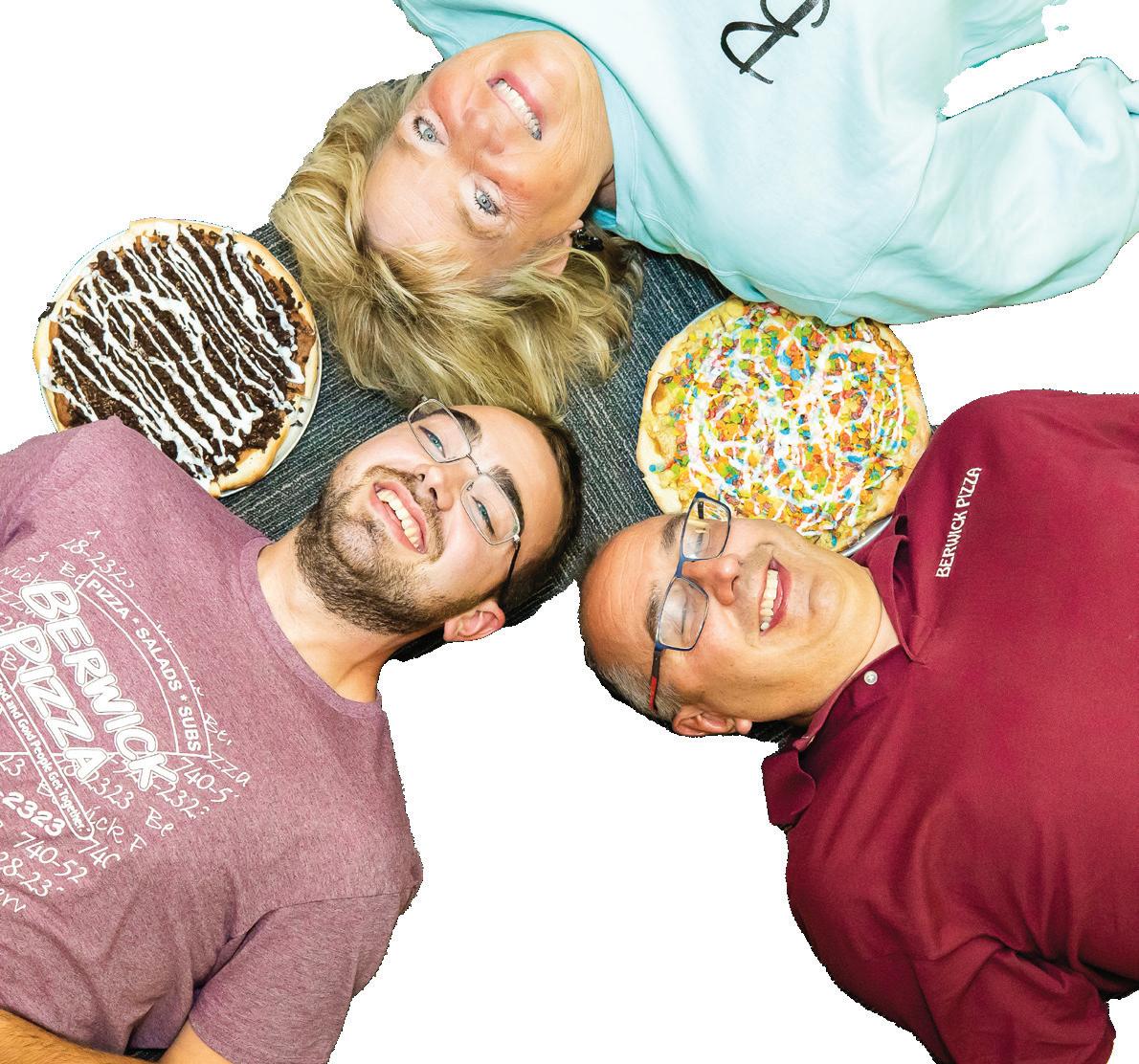





Increase revenue and lower cost
• No Busy Signals
• Call Recording
• Call Queuing / Auto Answering
• Multiple (random) start of call upsell messages
• On hold music/message loops
• Detailed reports—hold times, lost calls etc
• Callerid delivered to POS system
• Auto attendants— ”If you have arrived for curbside pickup press one ”


Protect against outages
• When your Internet fails our cellular backup router keeps your phones, credit card processing and web orders all working.
• The backup kicks in automatically in seconds. So quickly you will not even drop calls in progress when your primary Internet goes down!
• The same router can be used to create chain wide virtual private network to connect your locations.
• SD WAN LTE/LTE A (4G/5G) modems.


“Press one to receive a text message with links to our onlne ordering ”.
Manage bulk text message marketing from our system to drive increased revenue. As low as $0.01 per message. Group text messaging to communicate with your employees (drivers, bartenders, all staff etc).